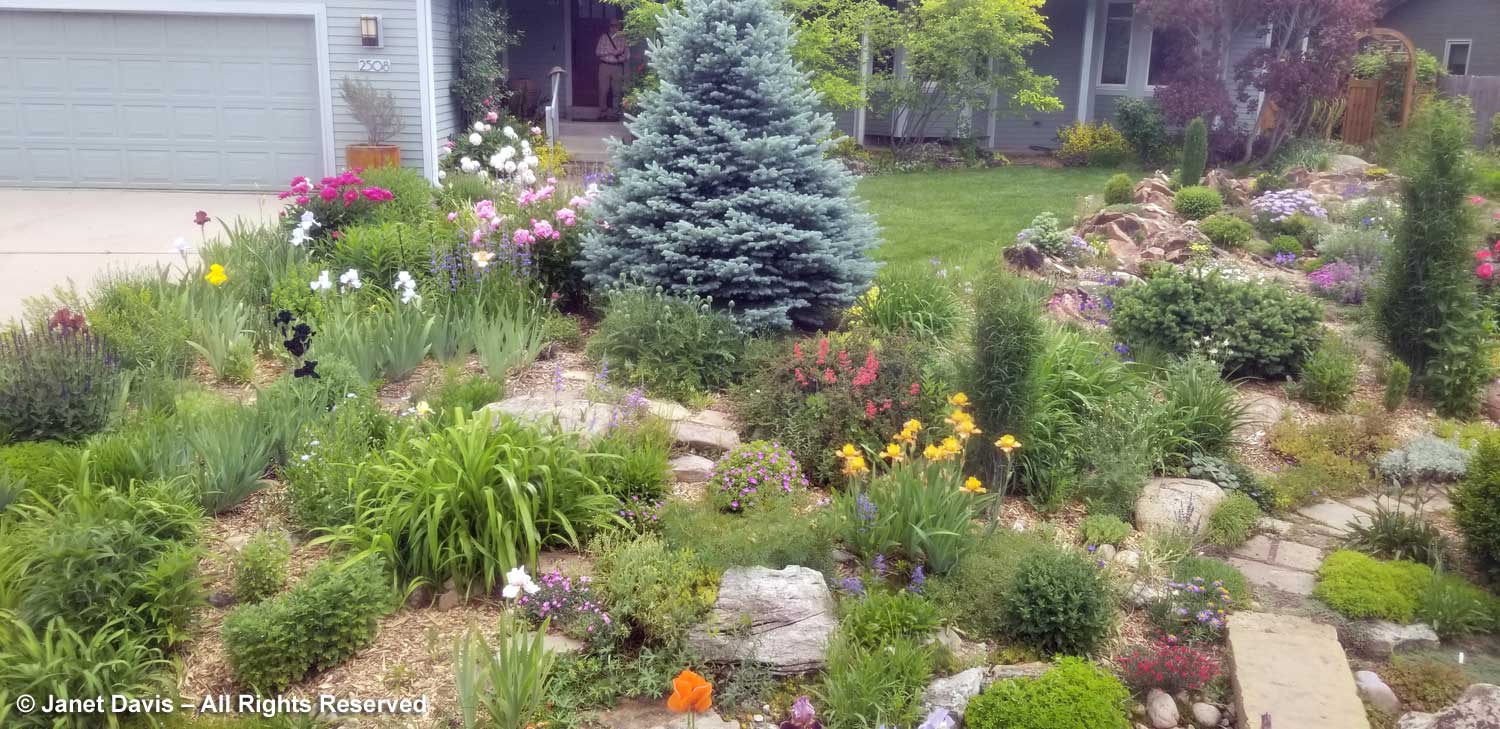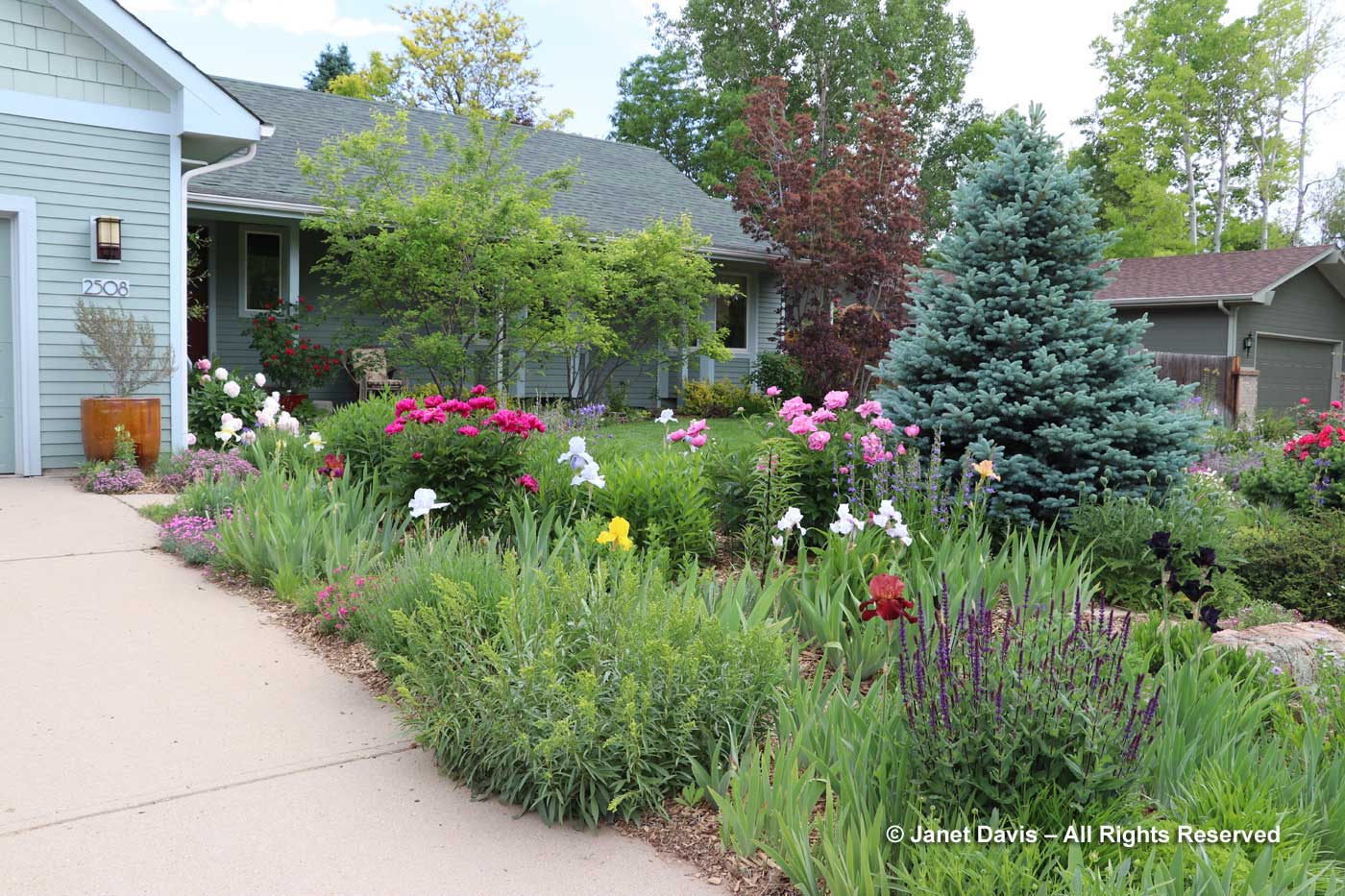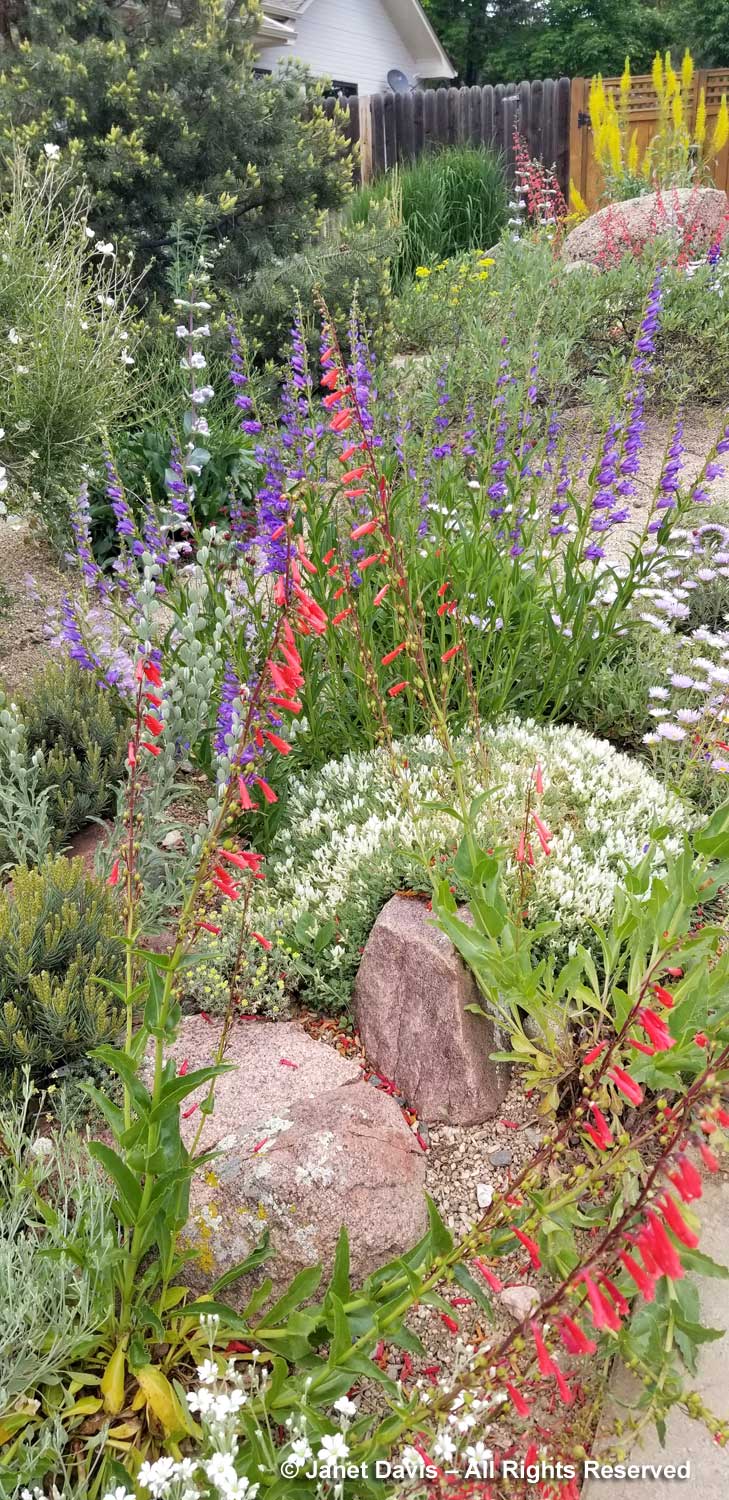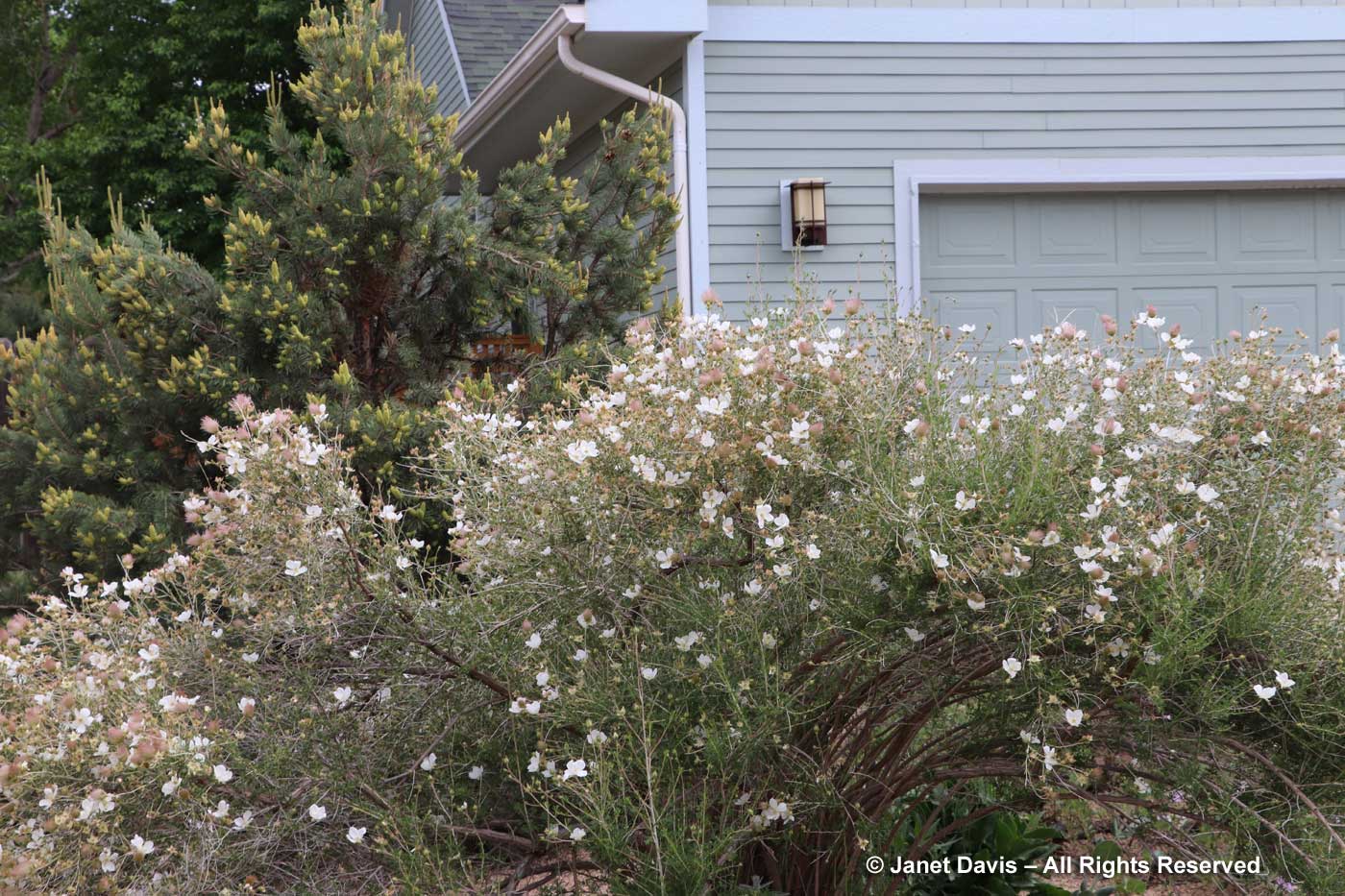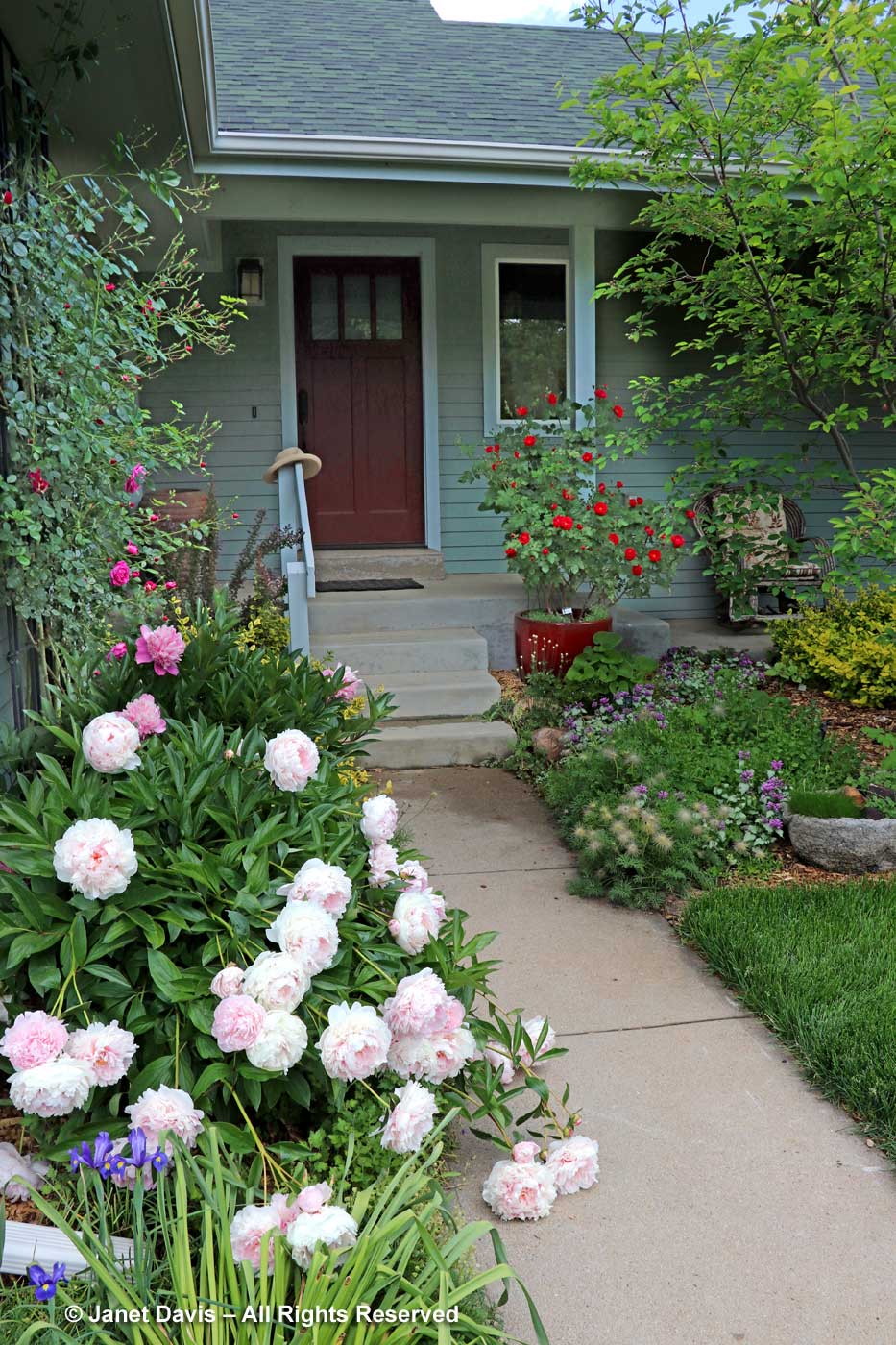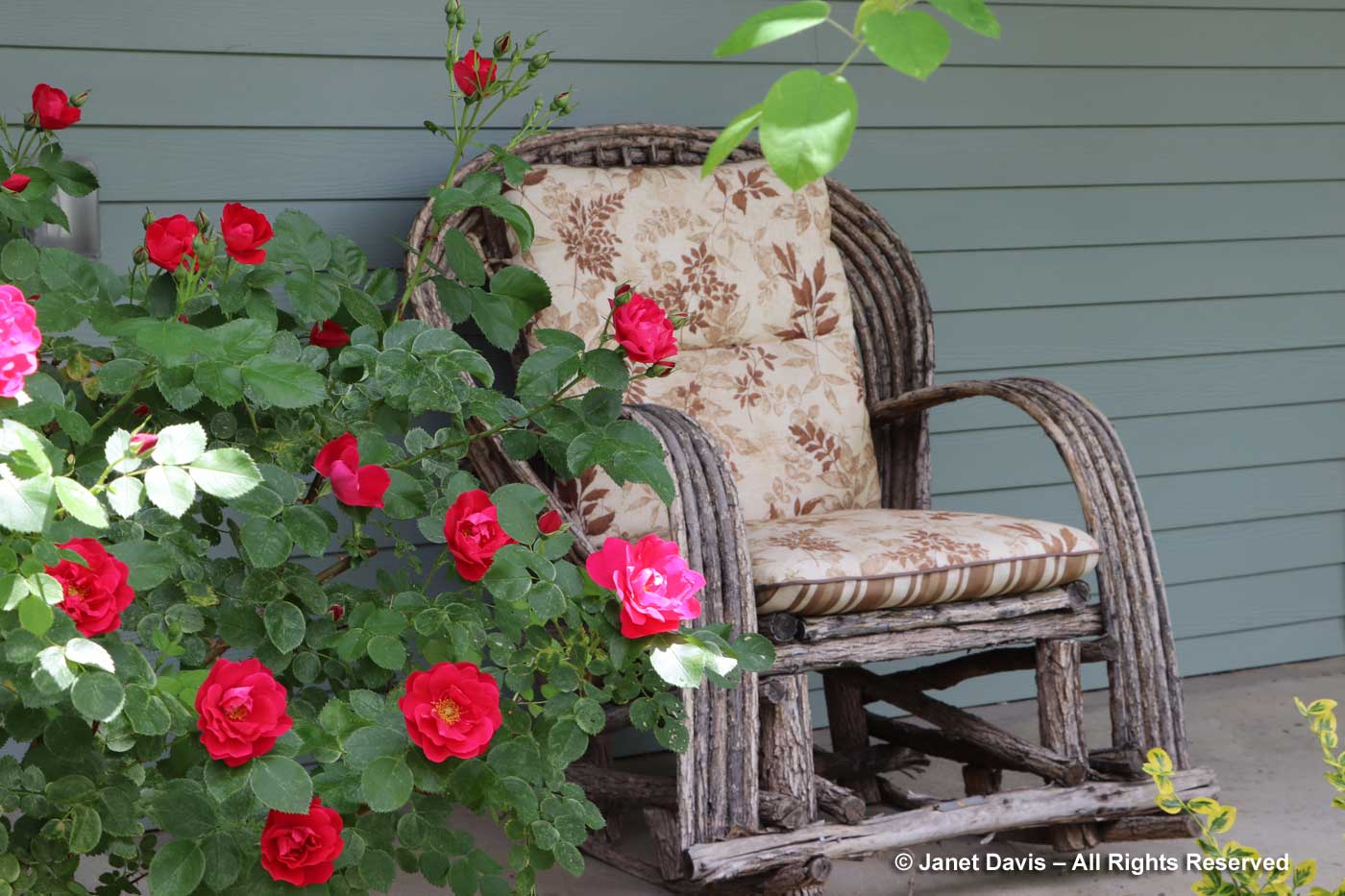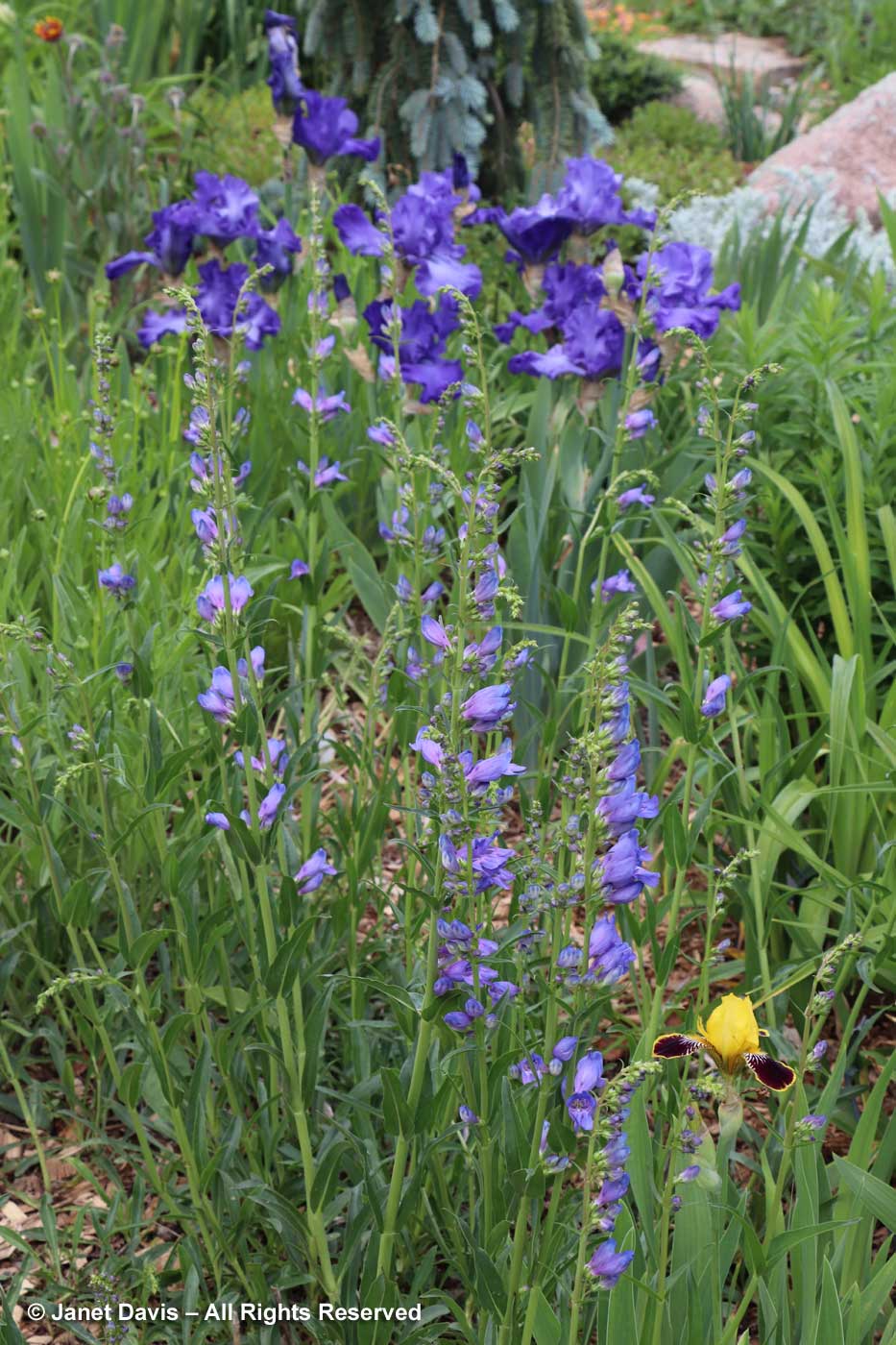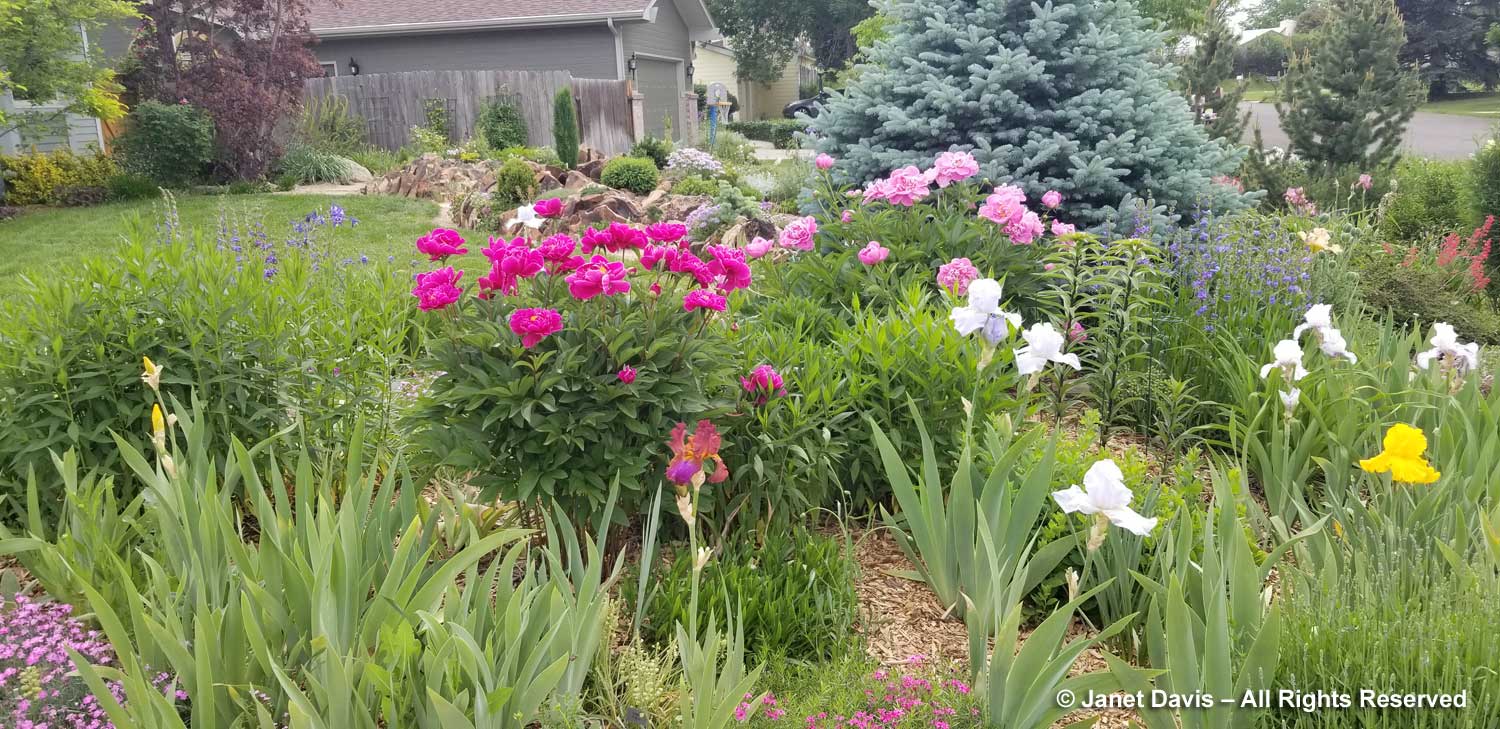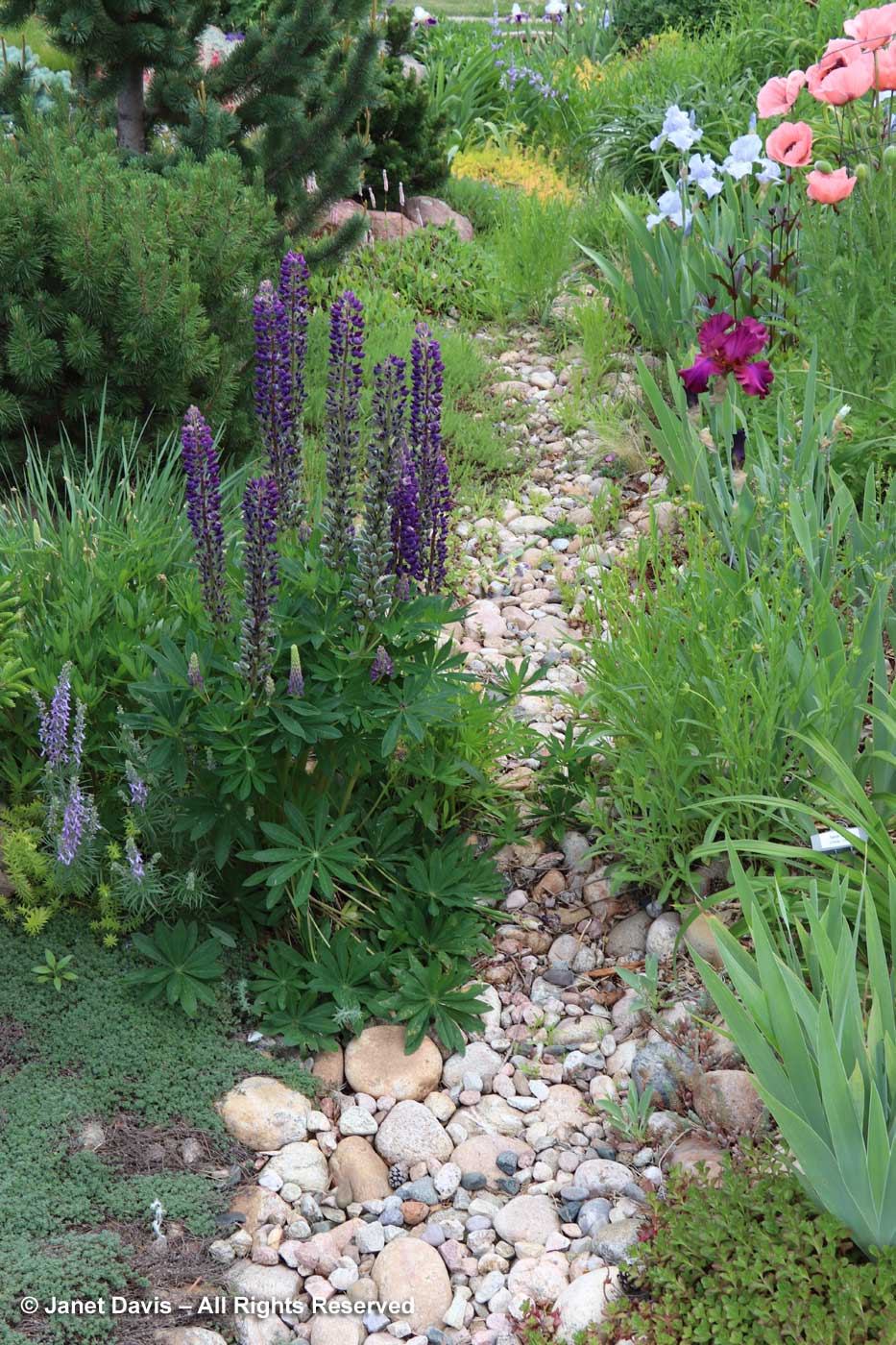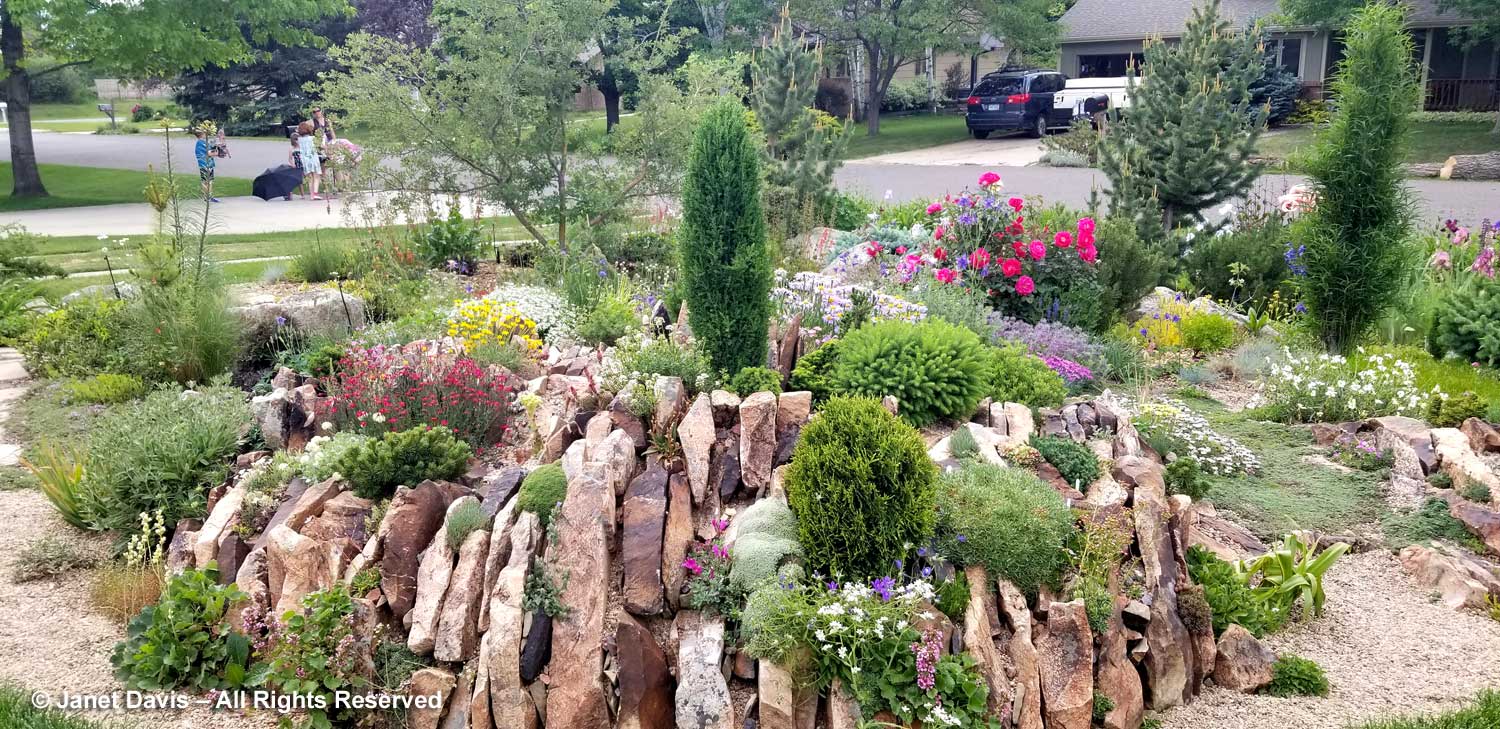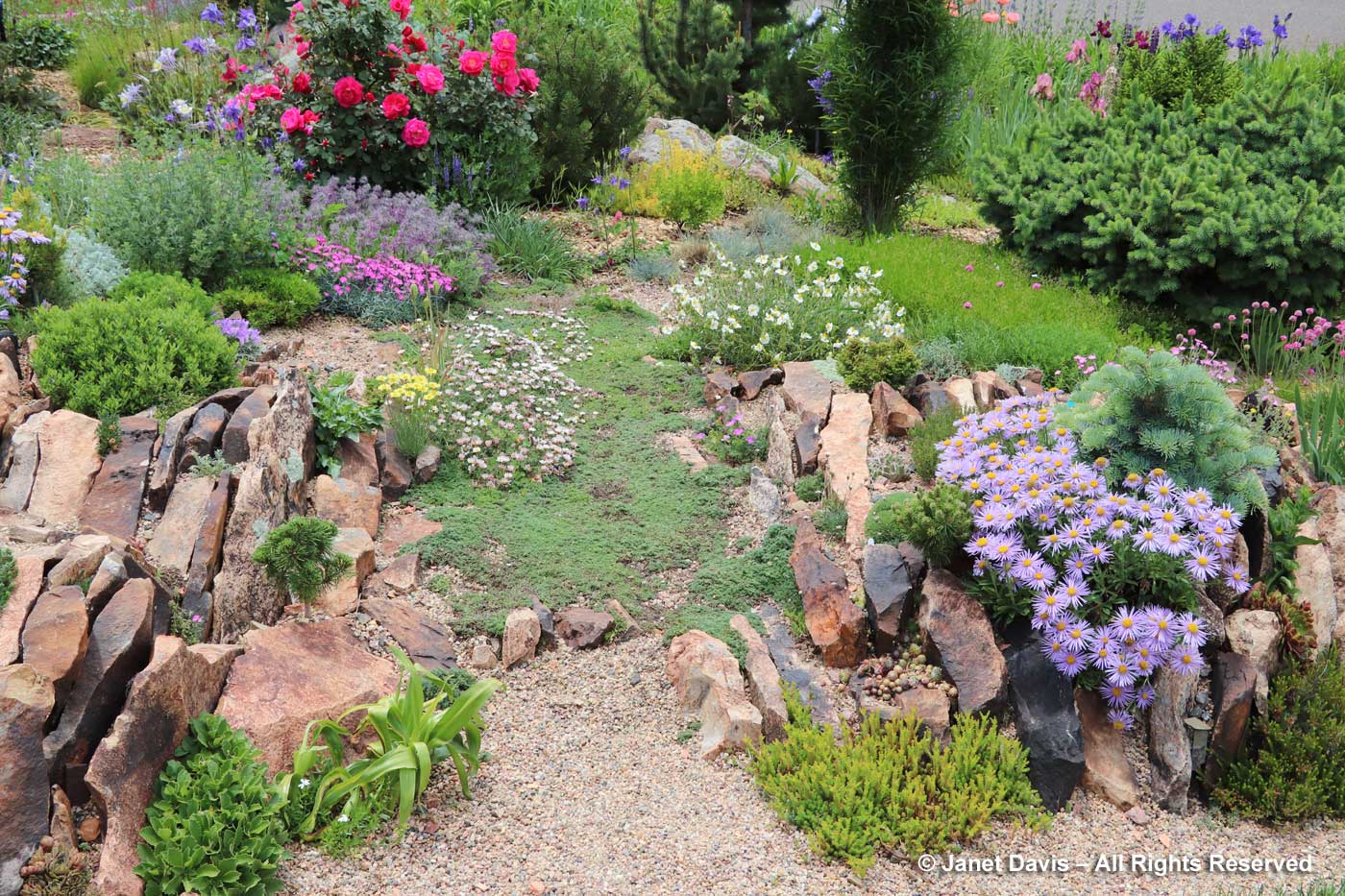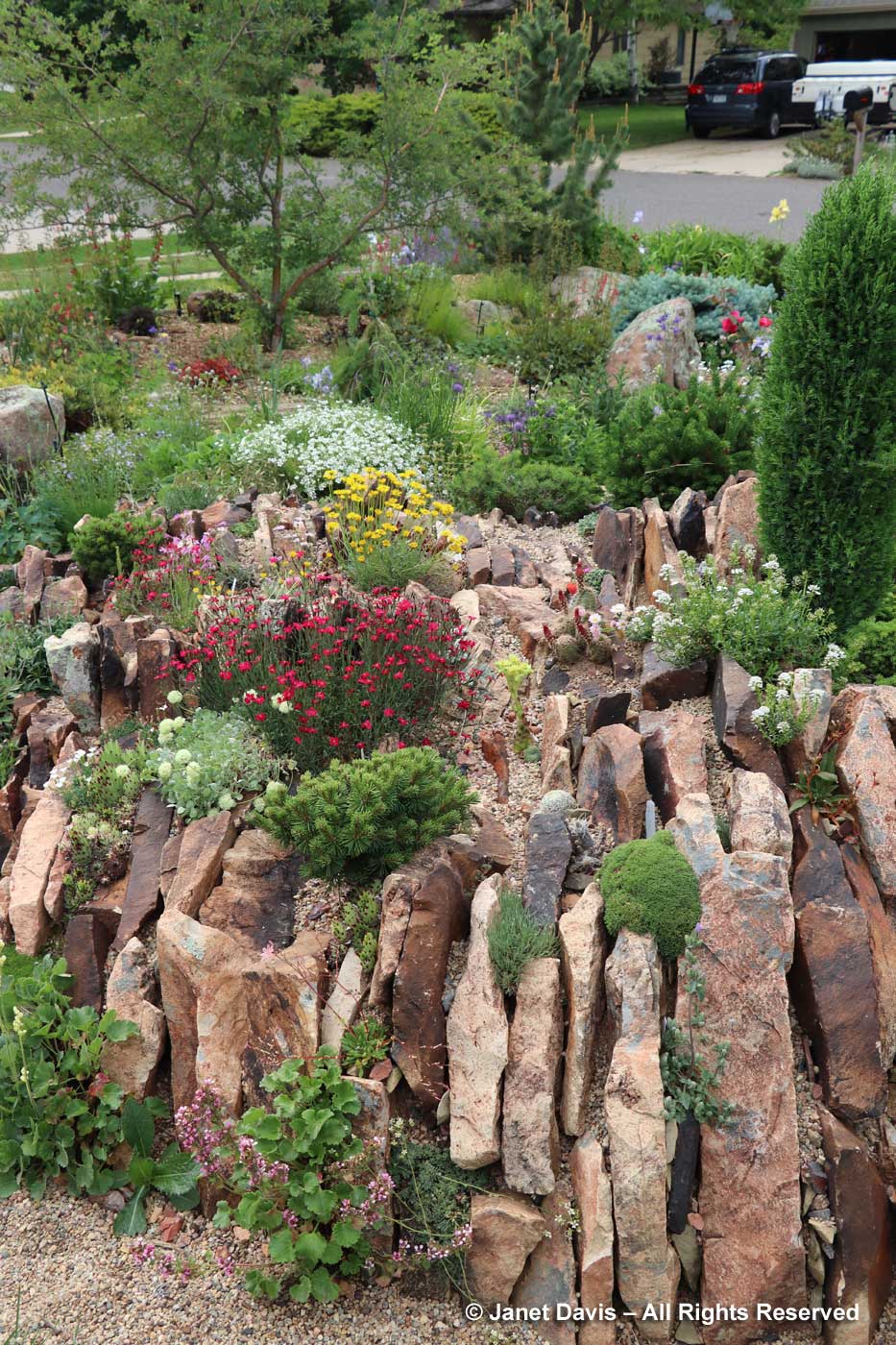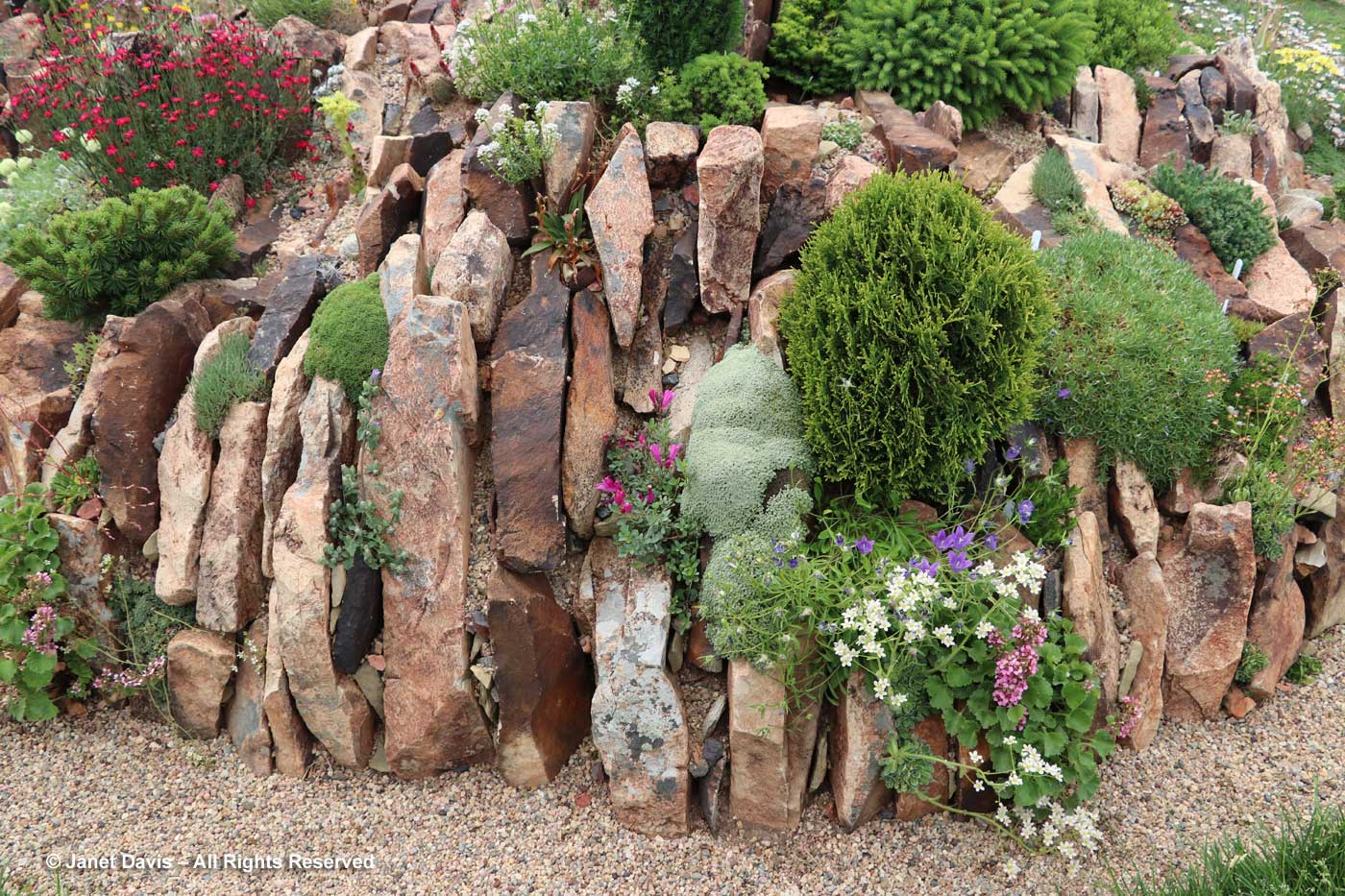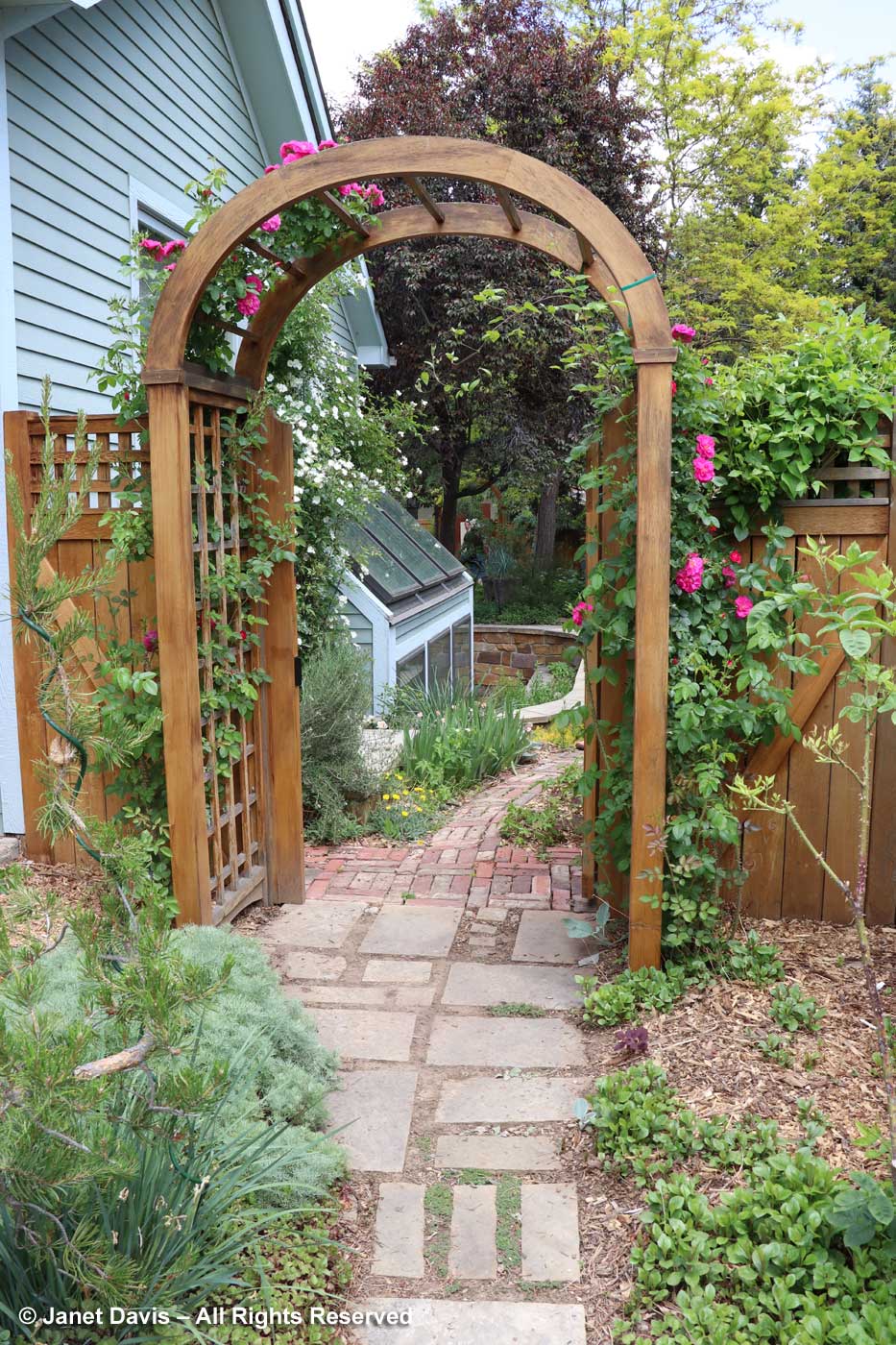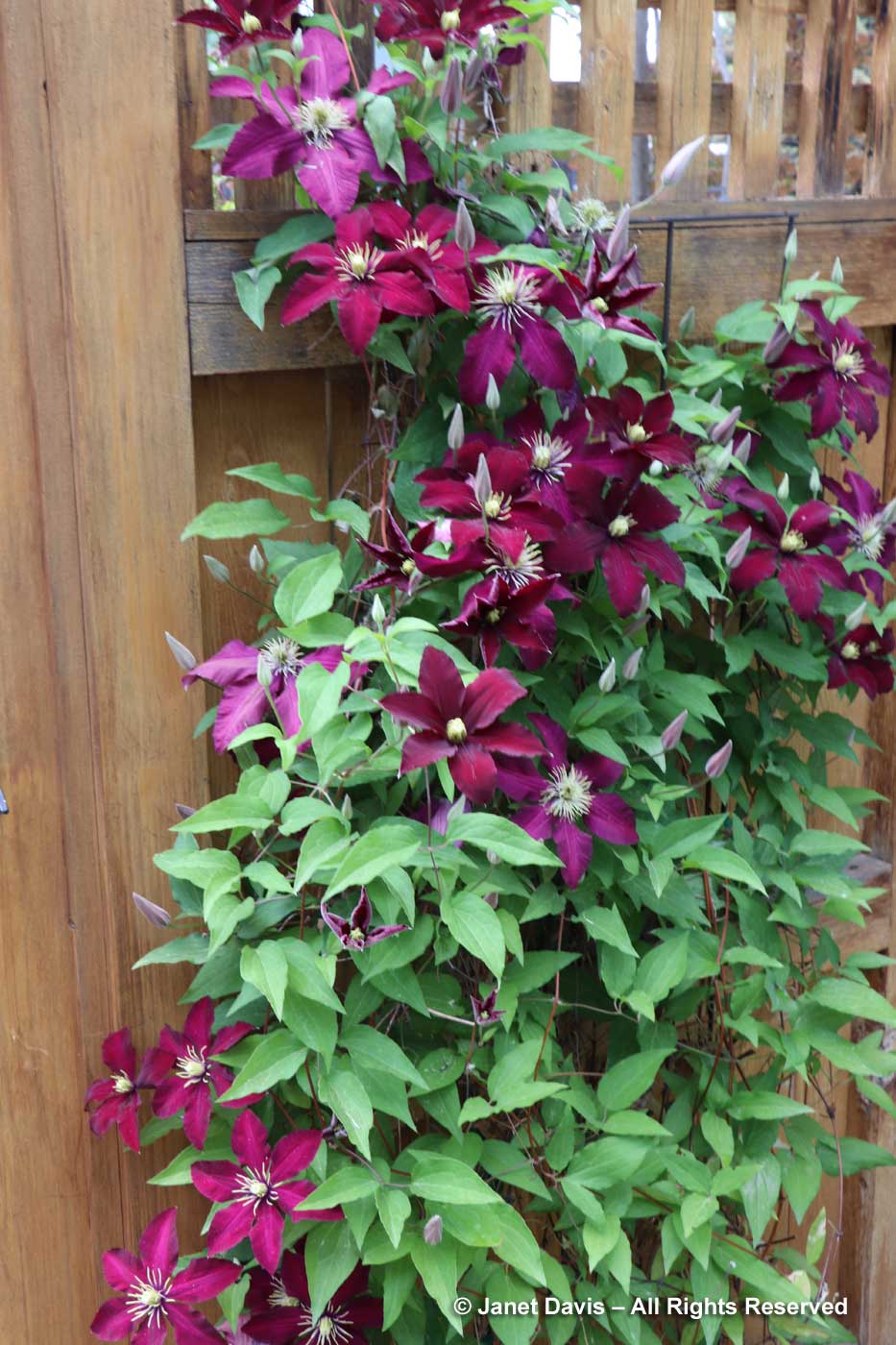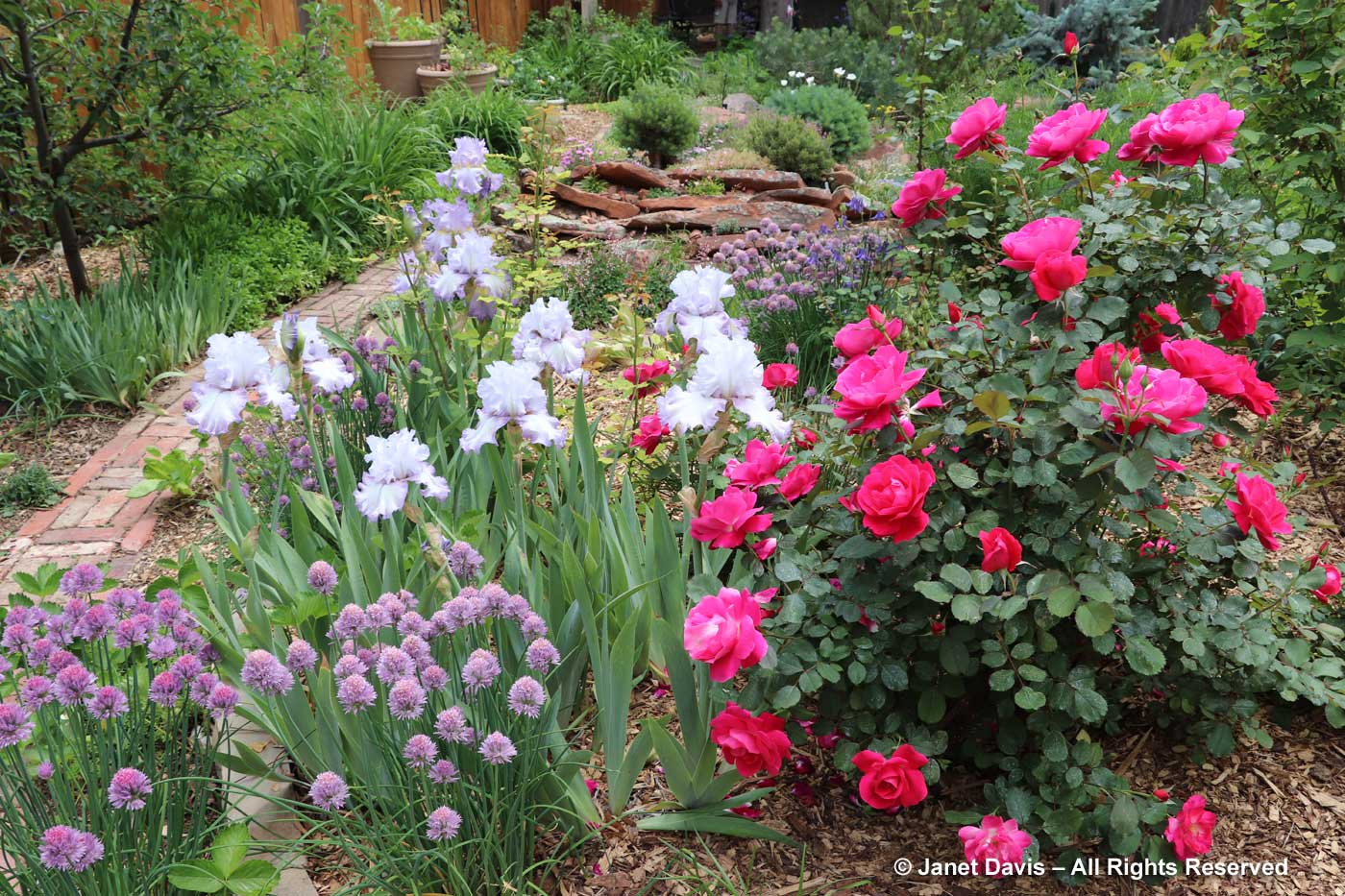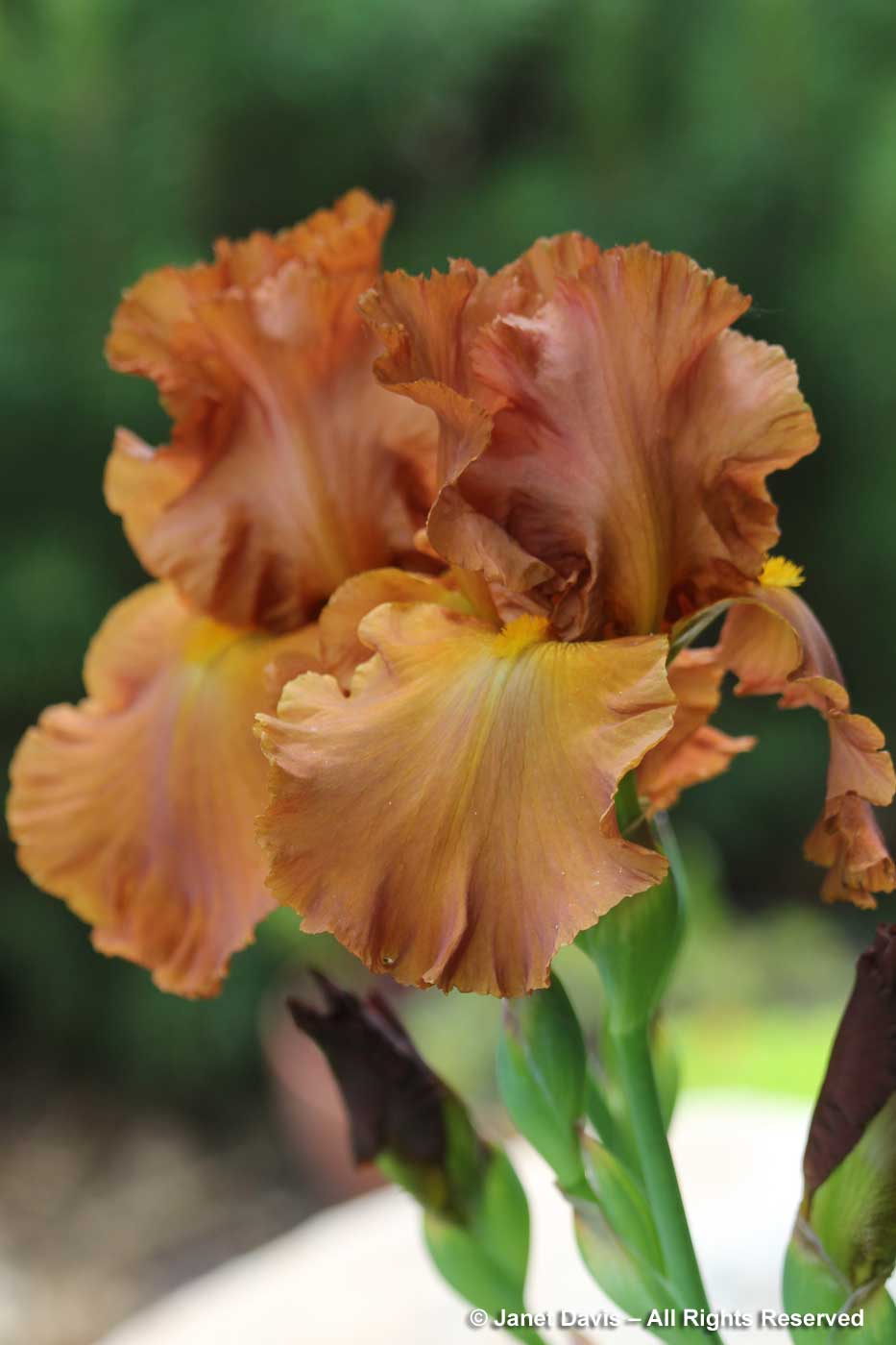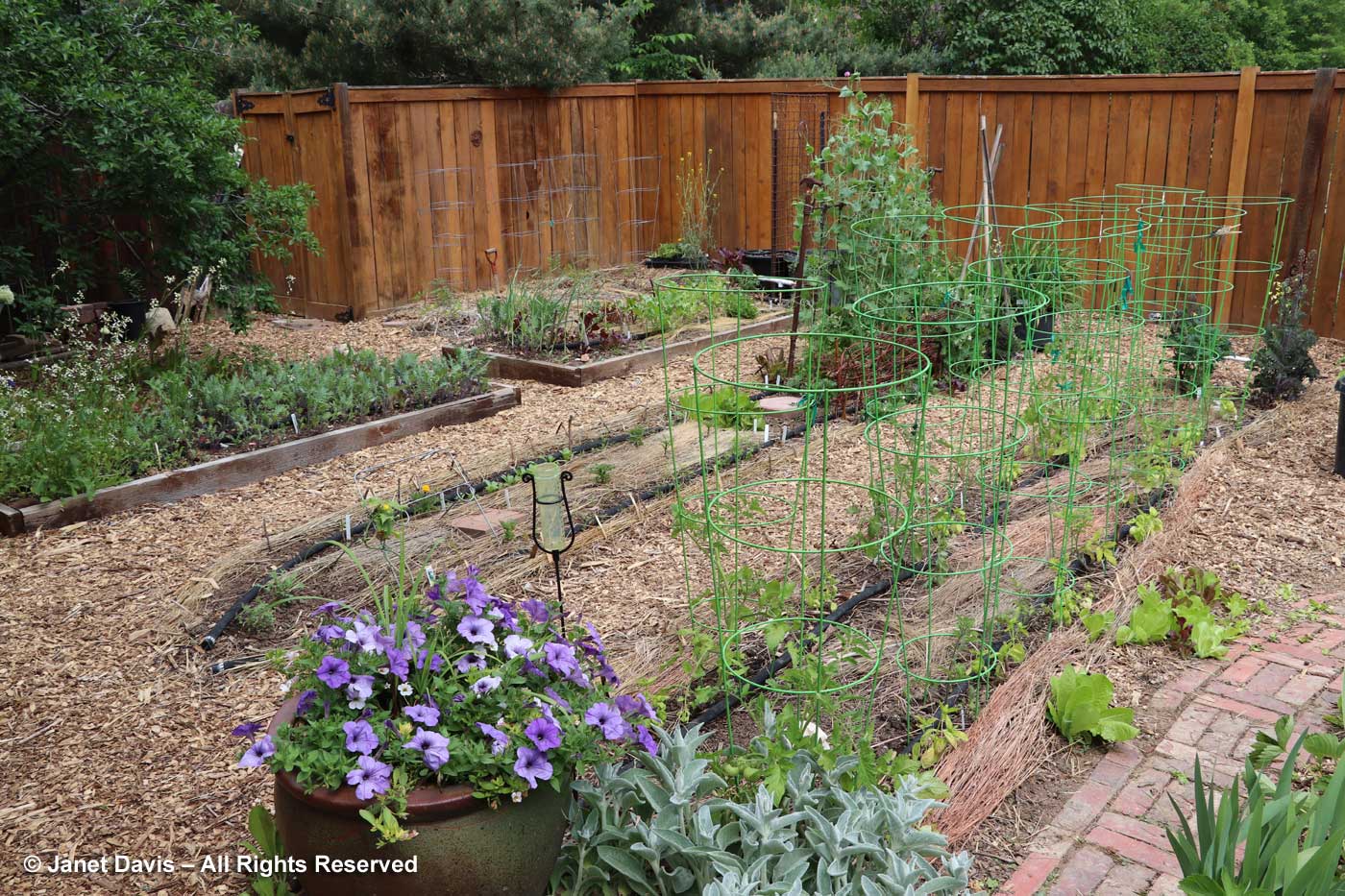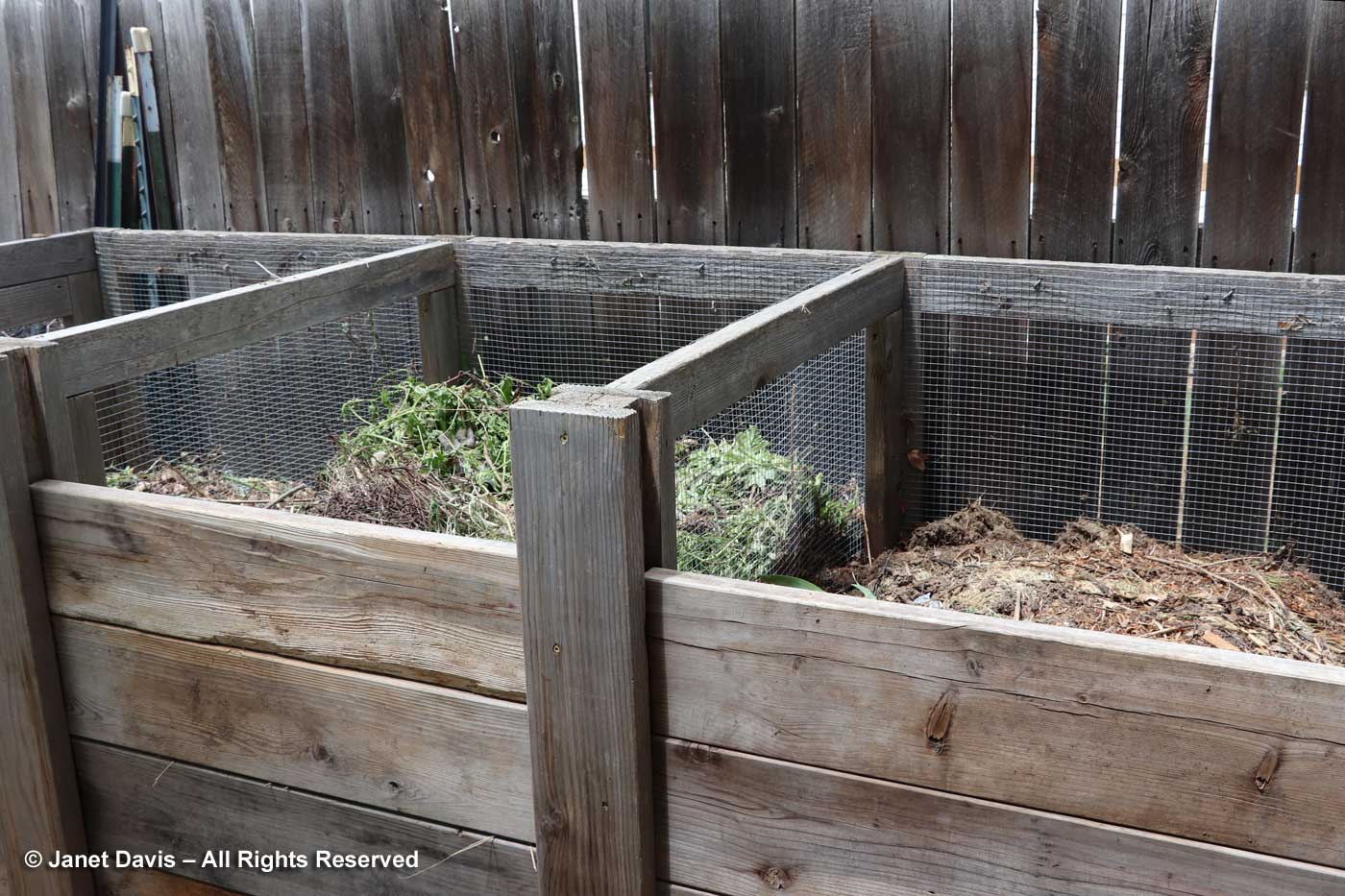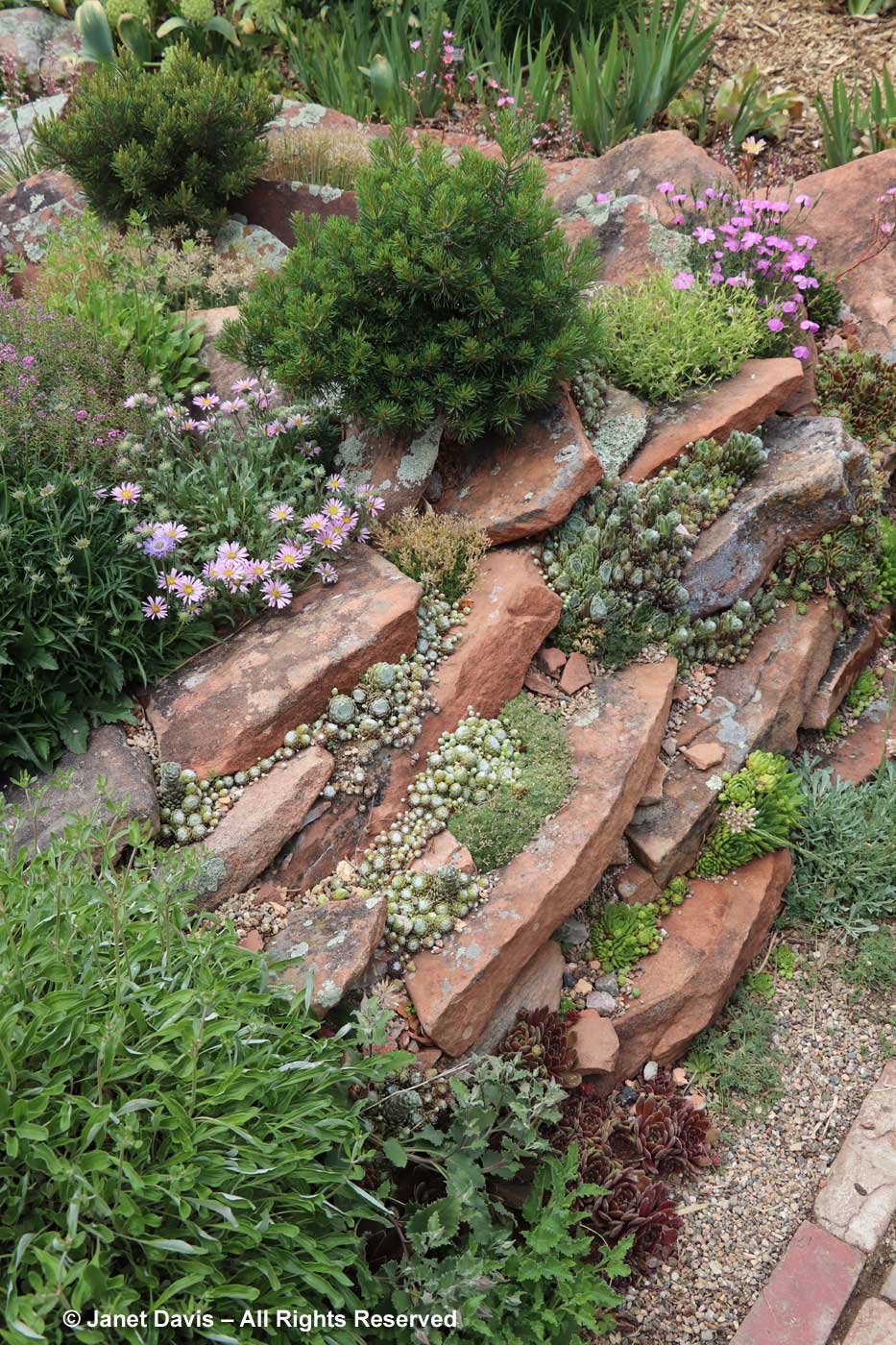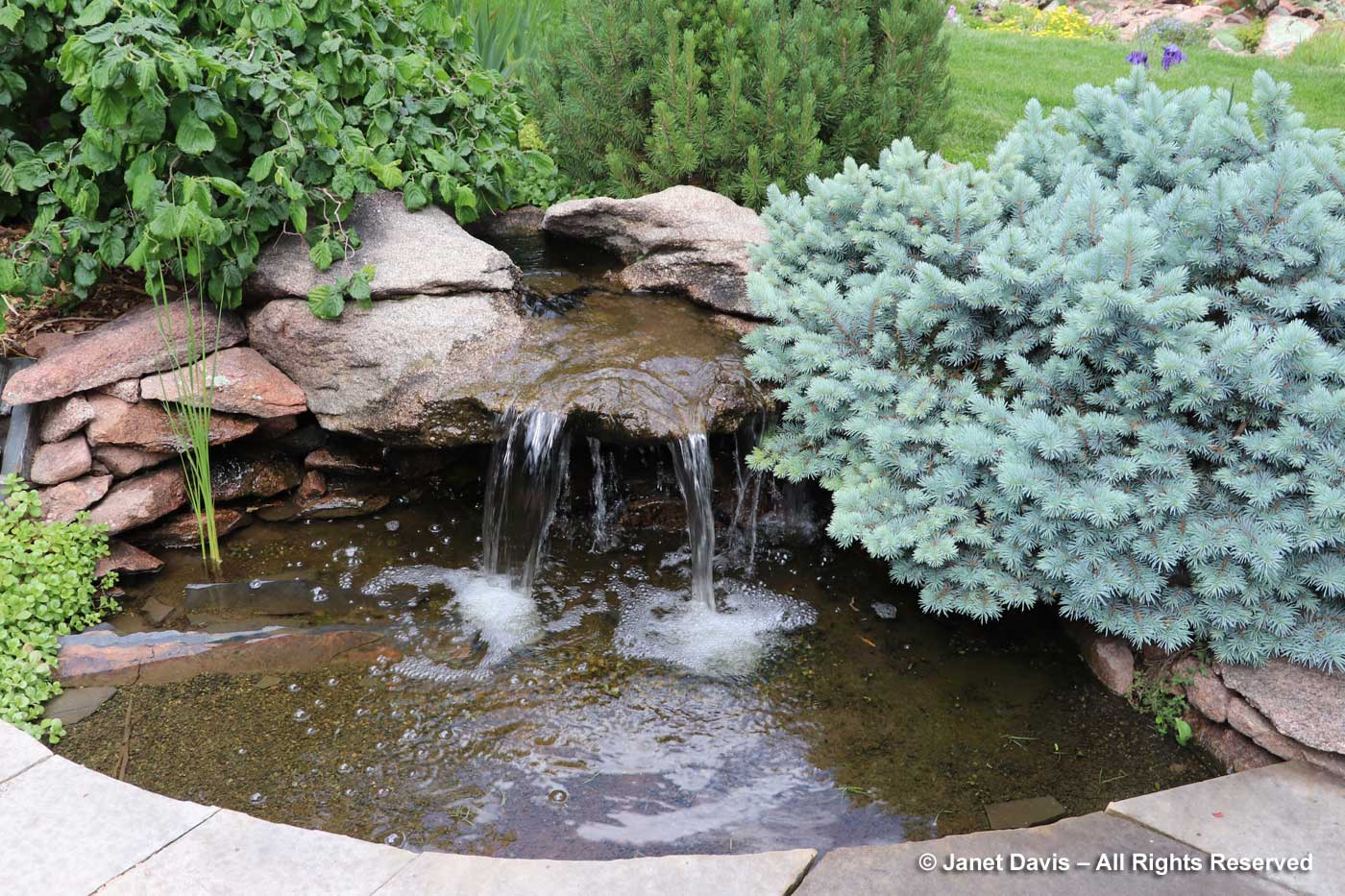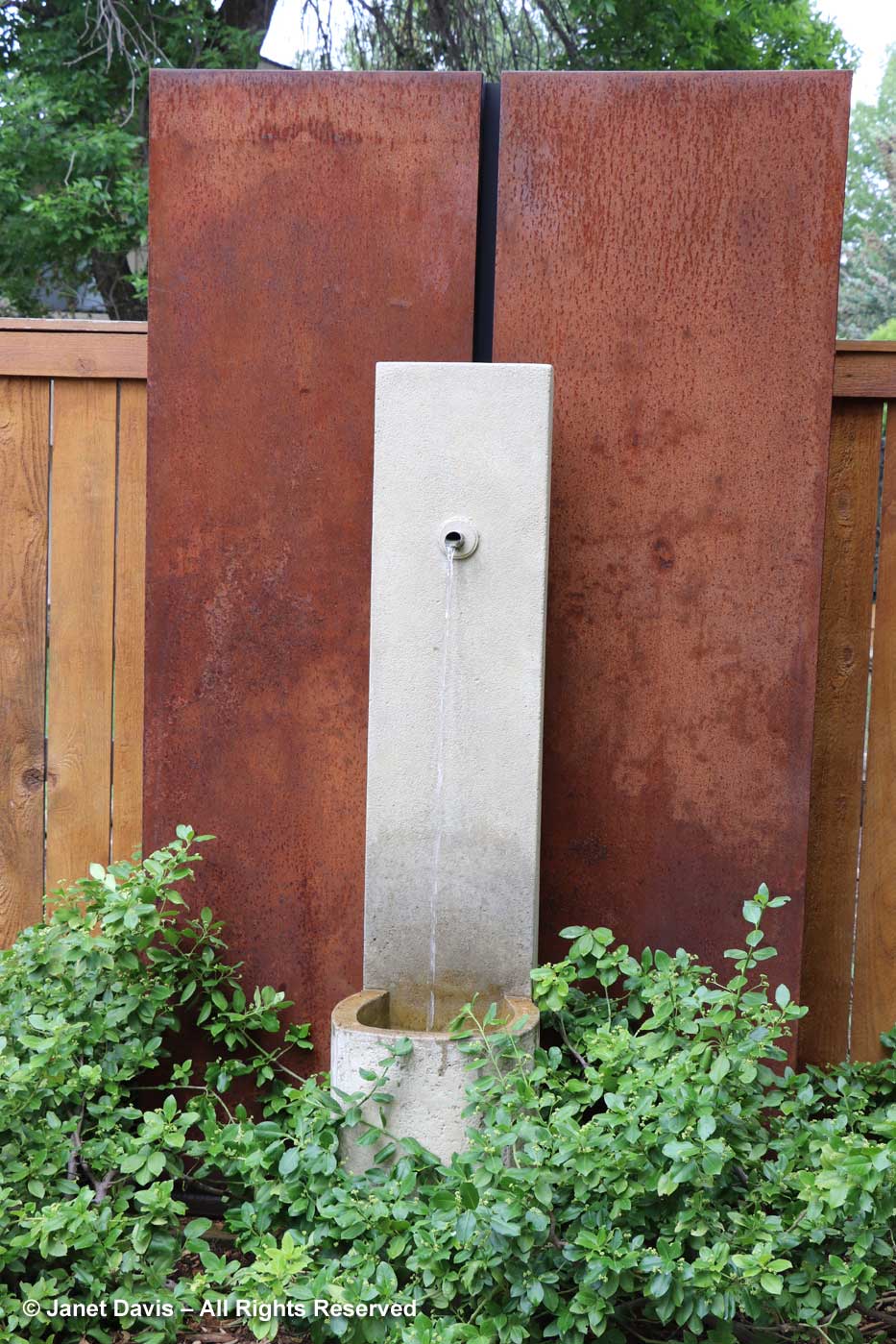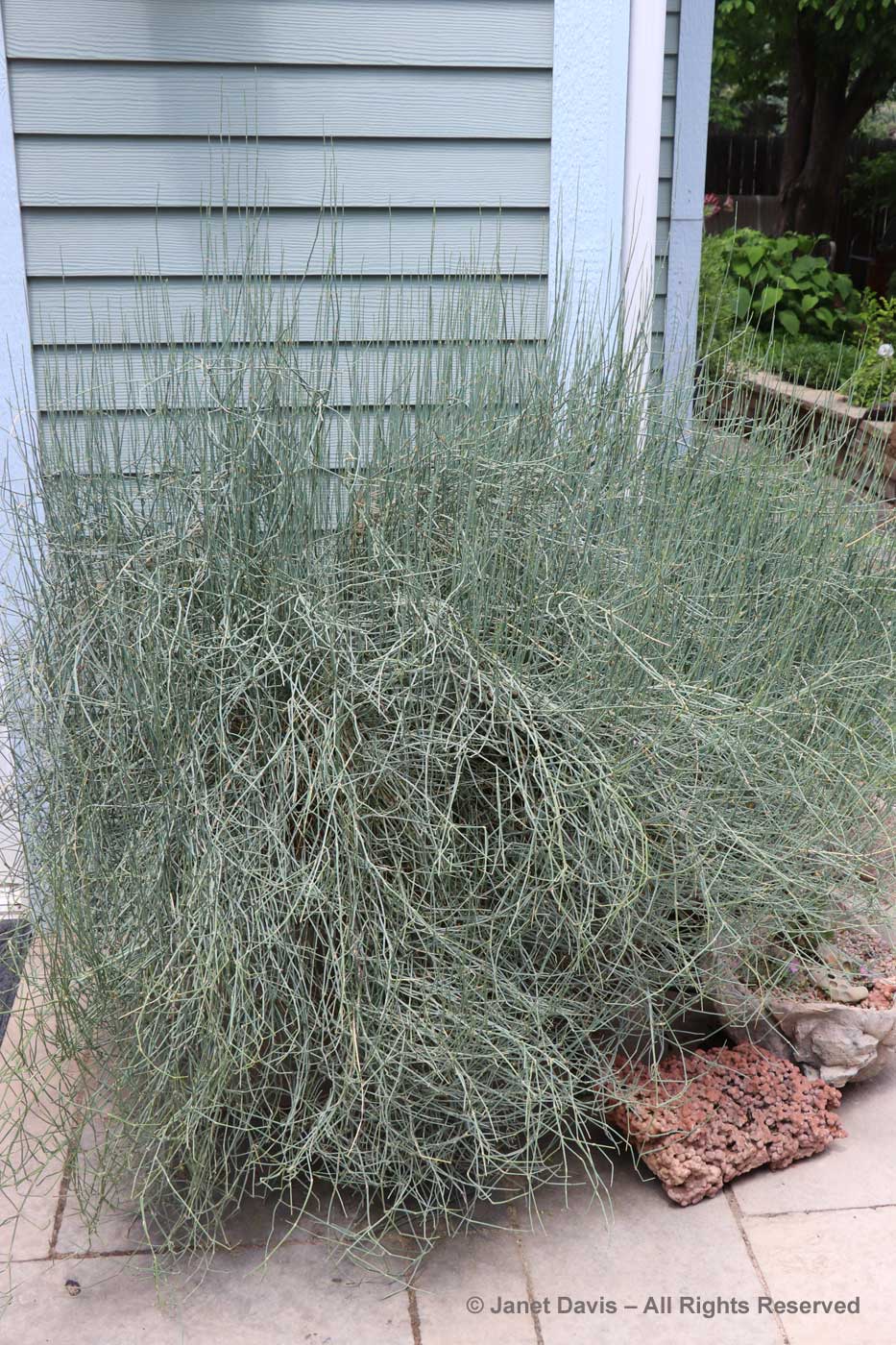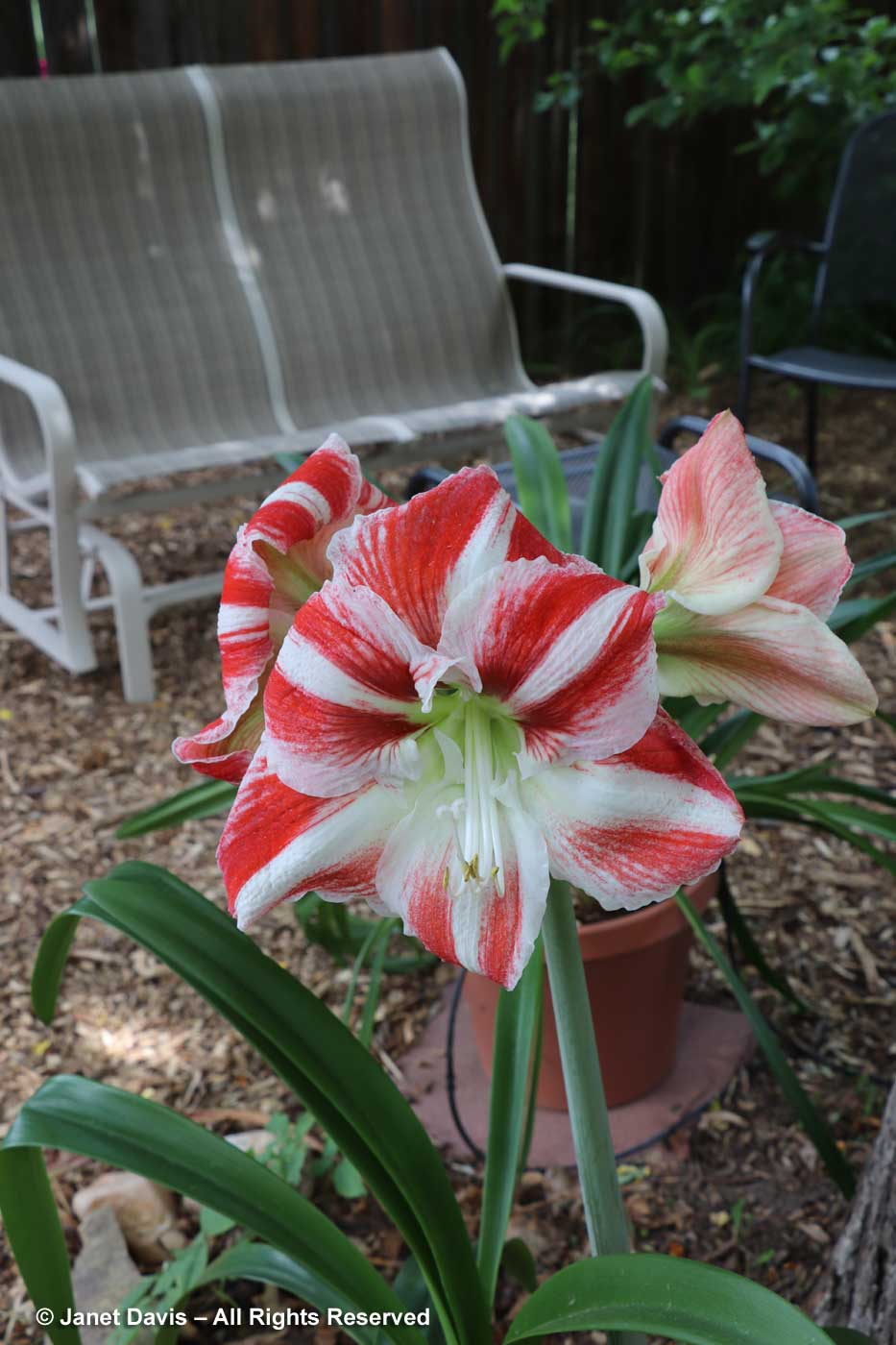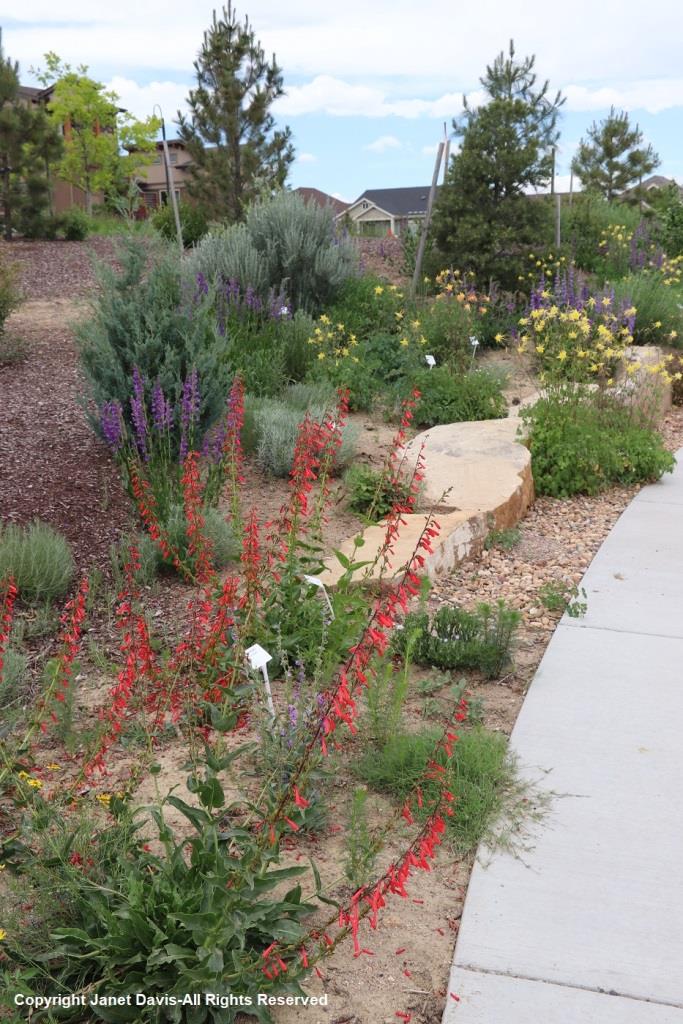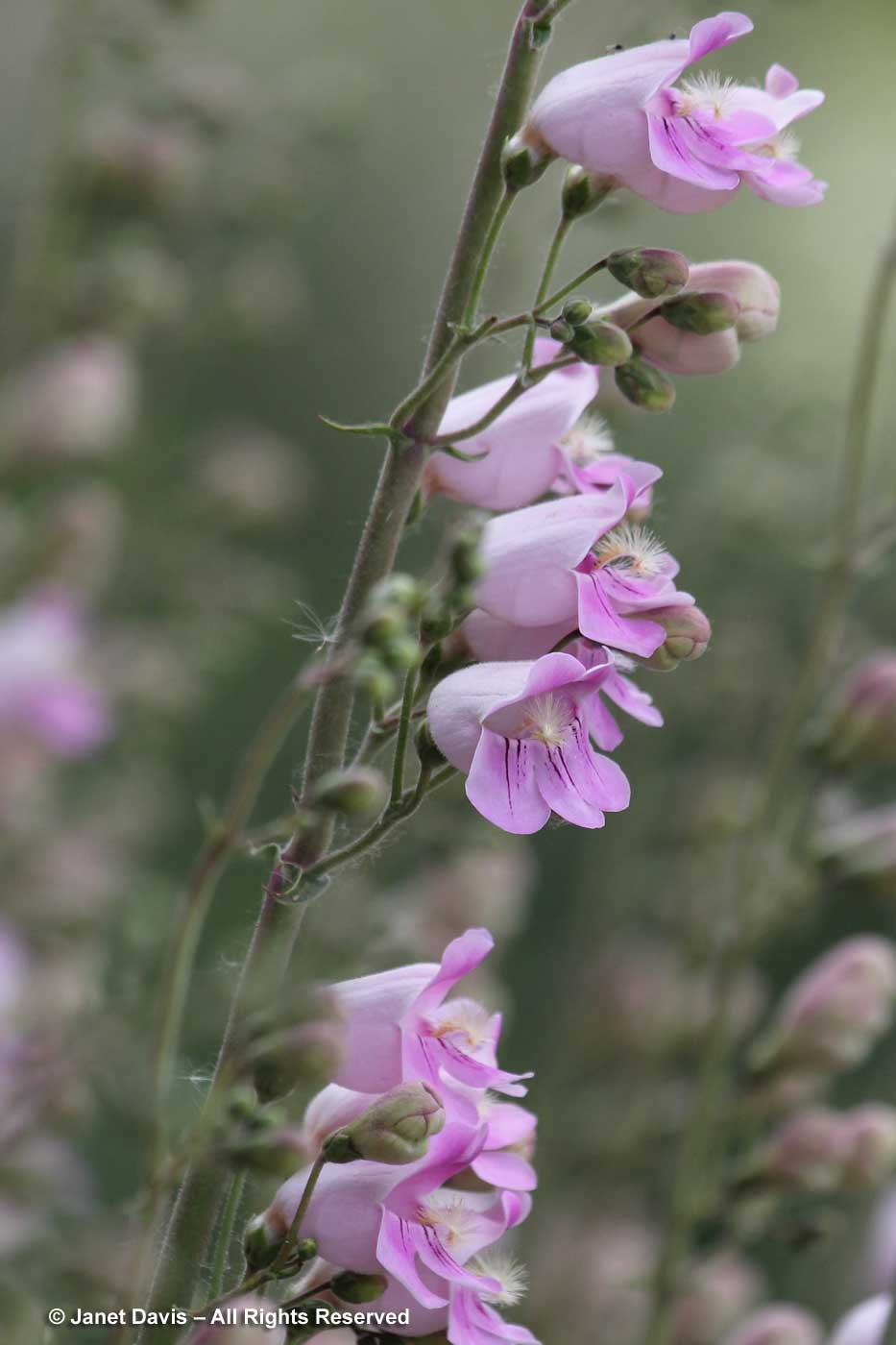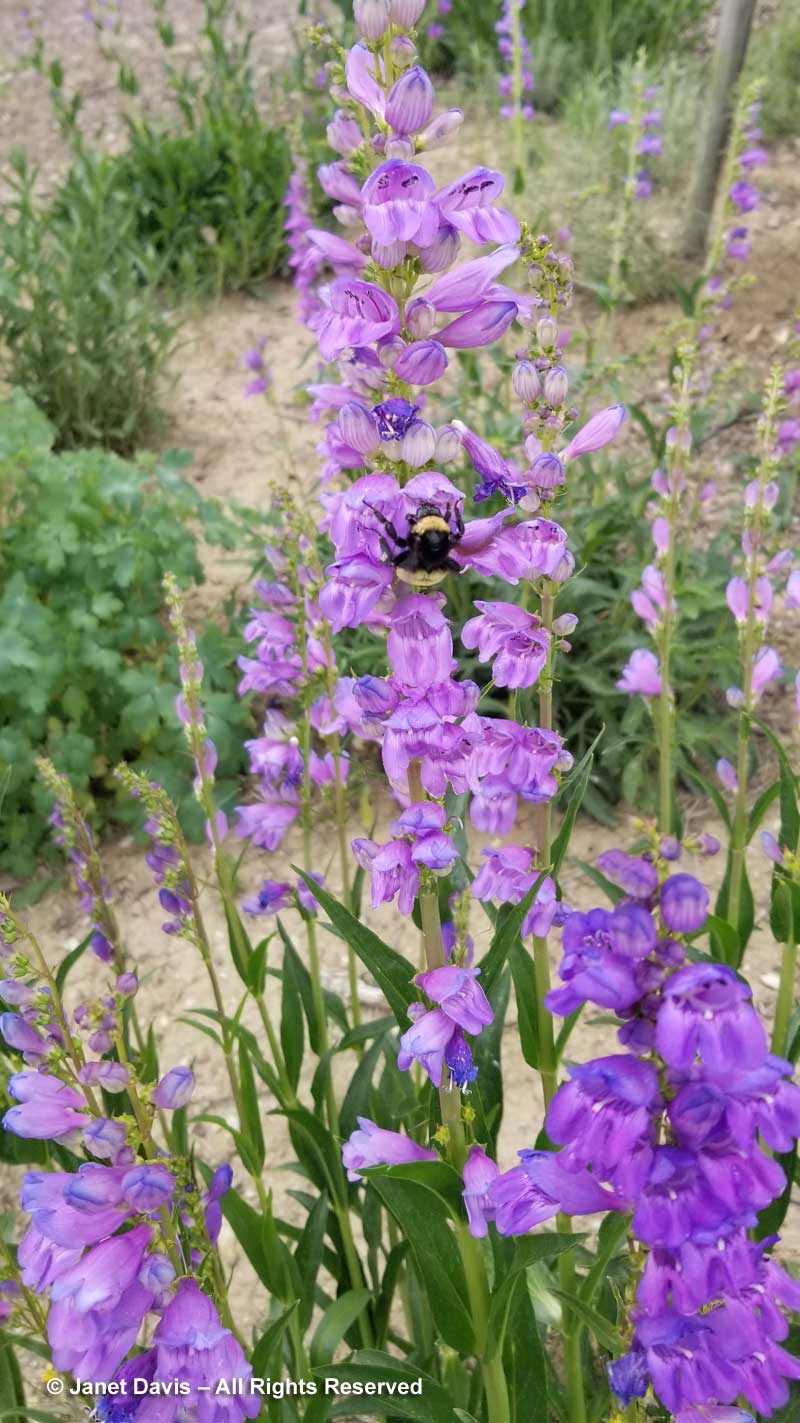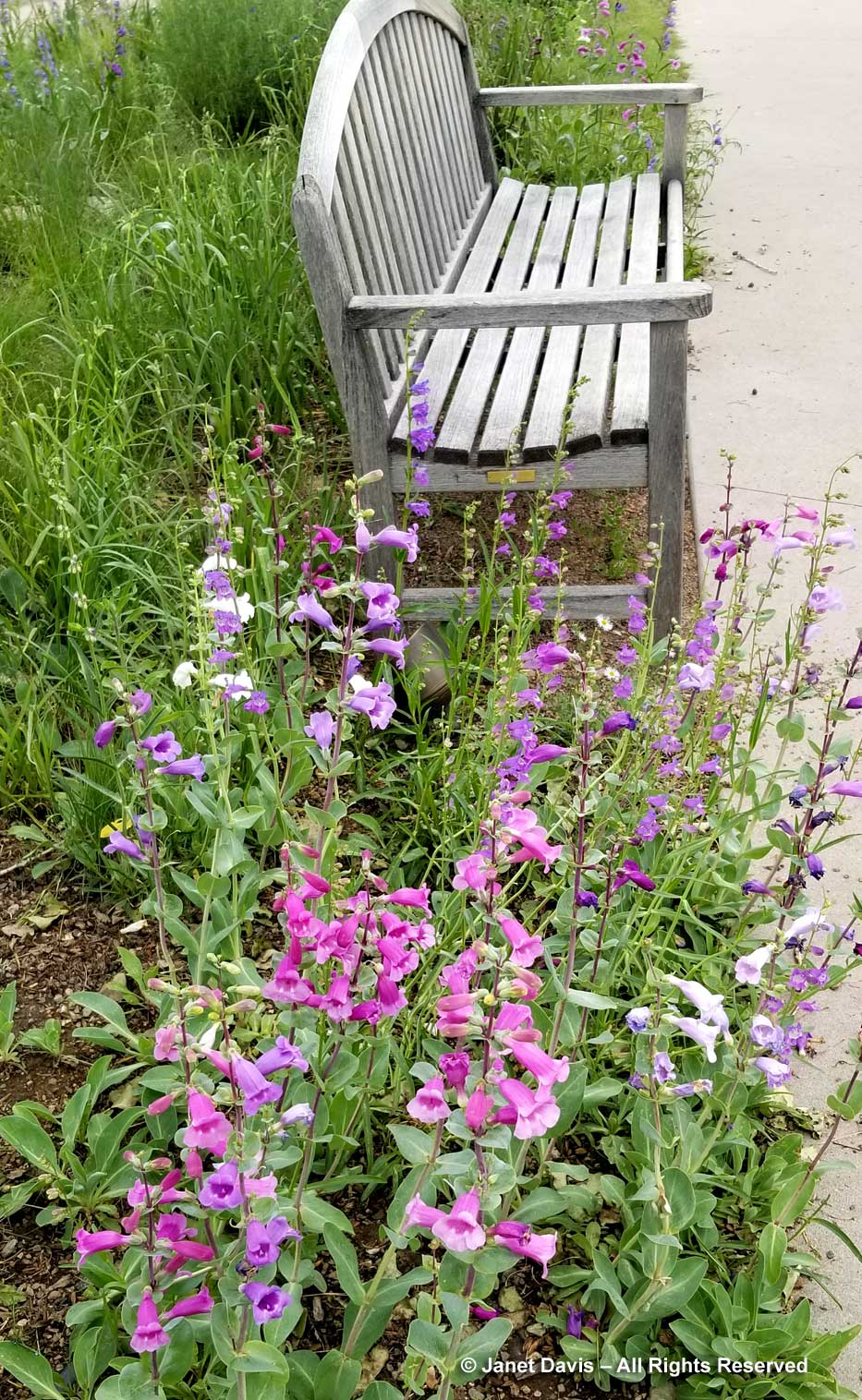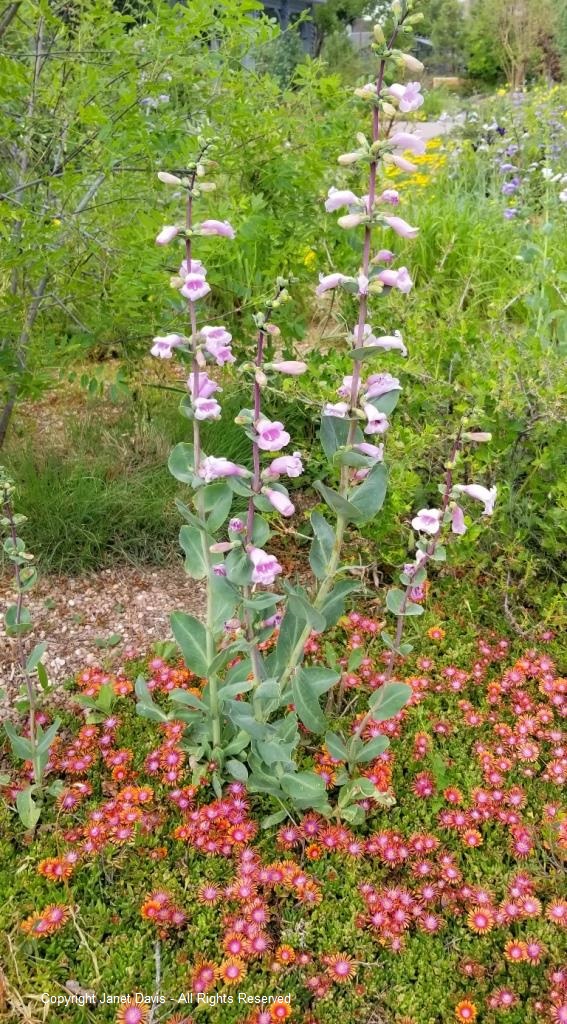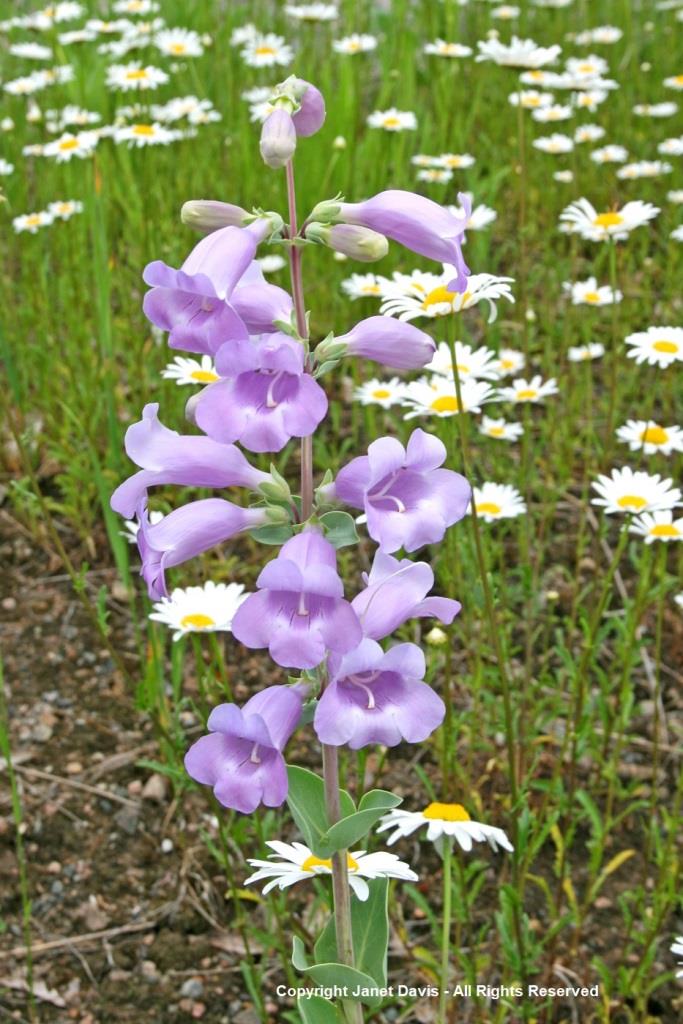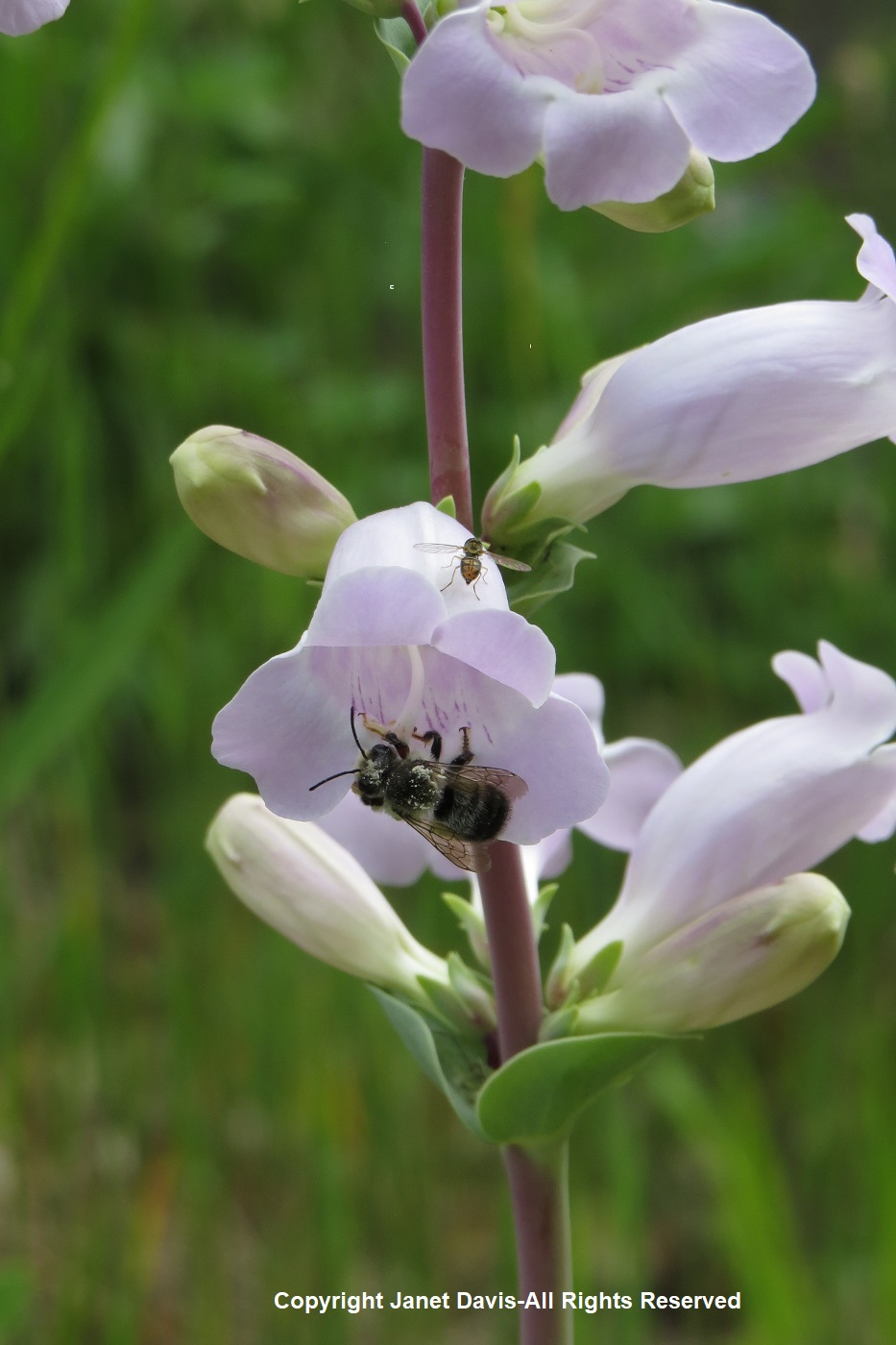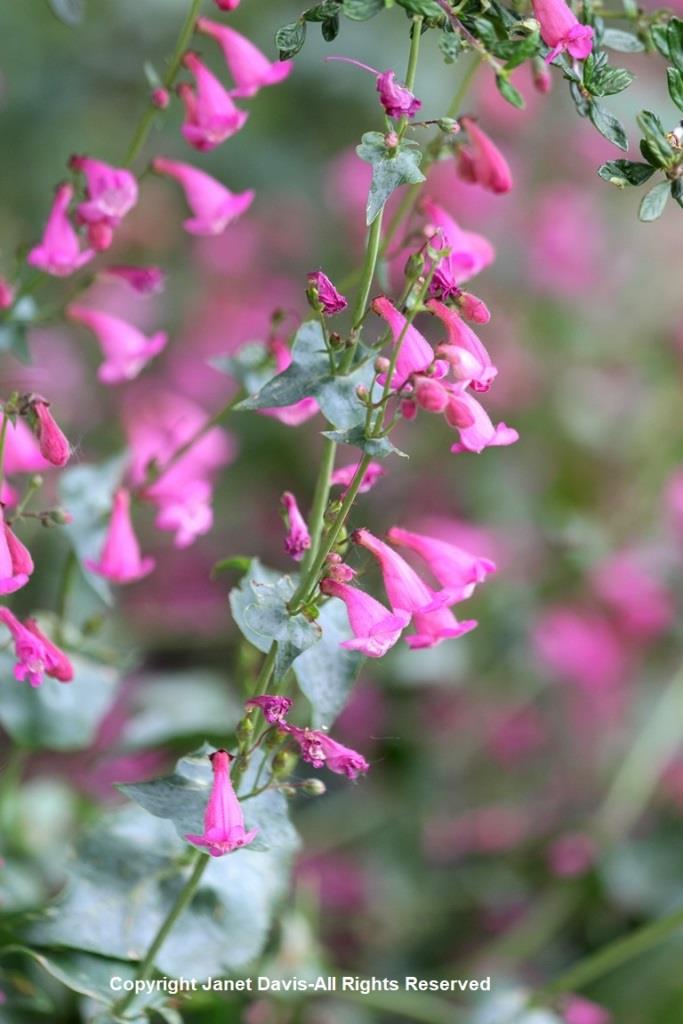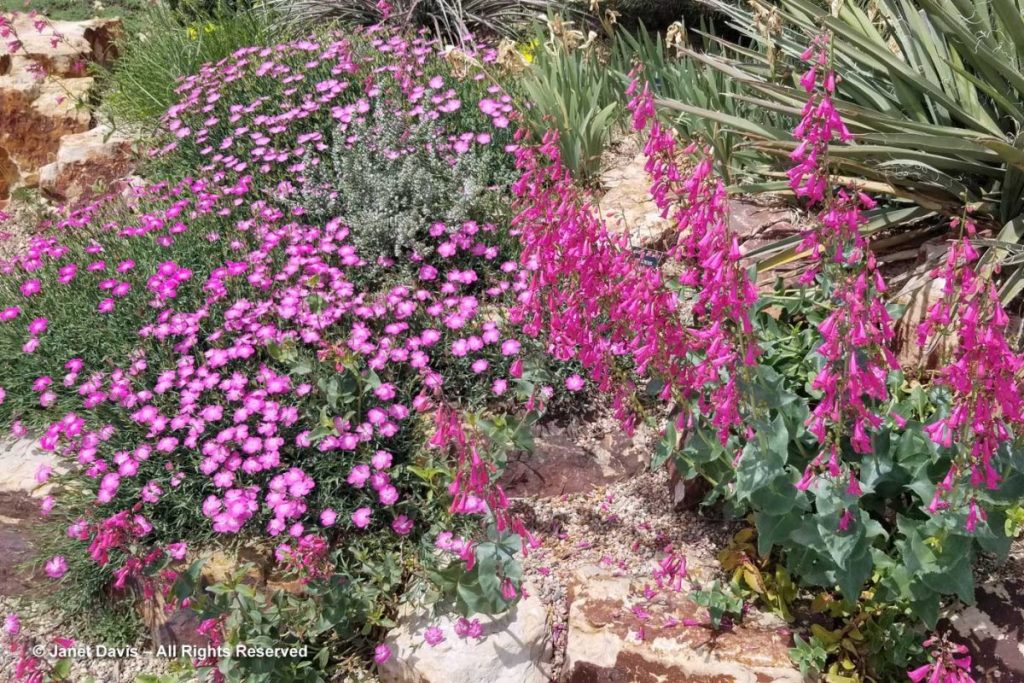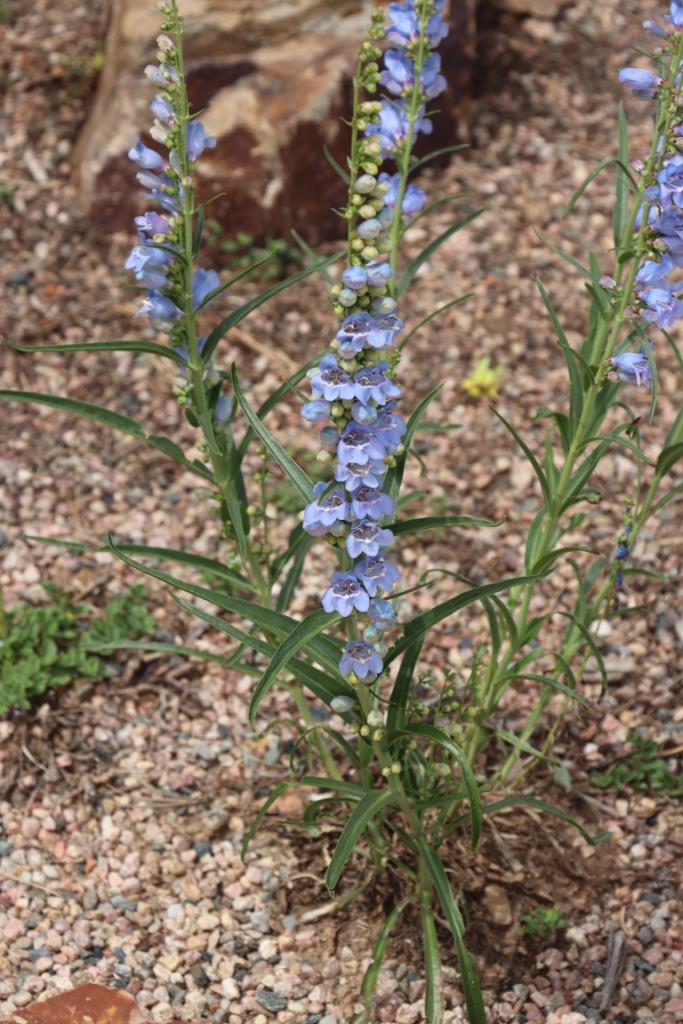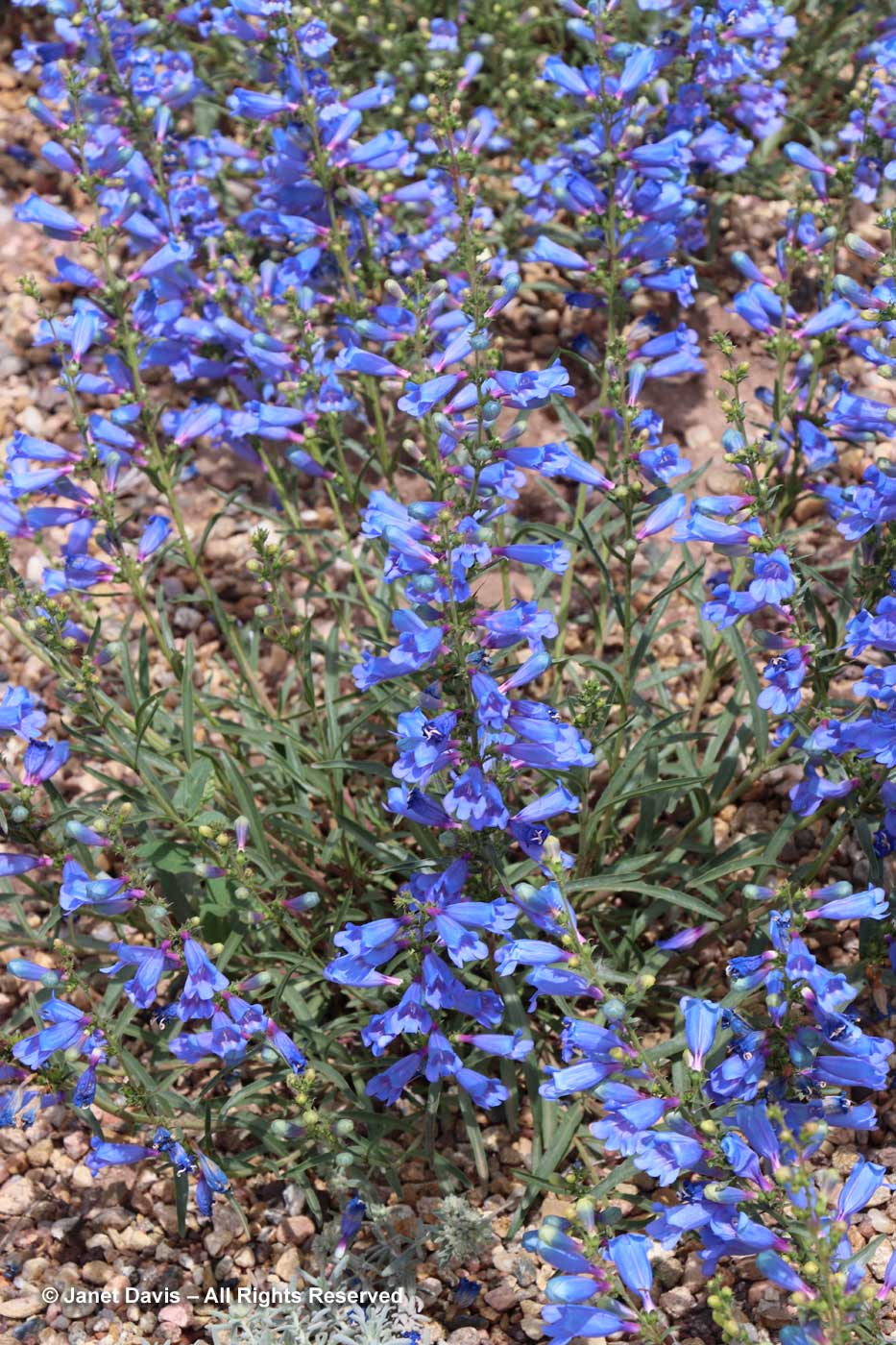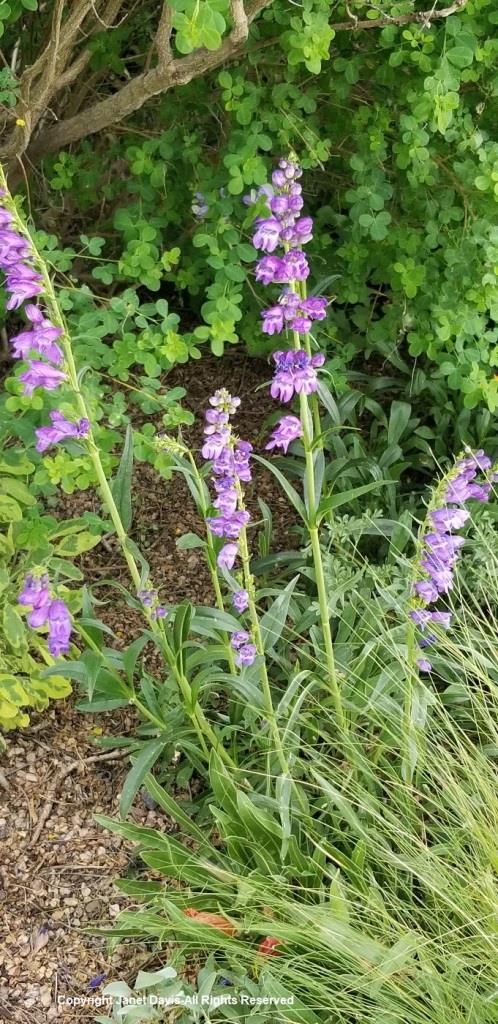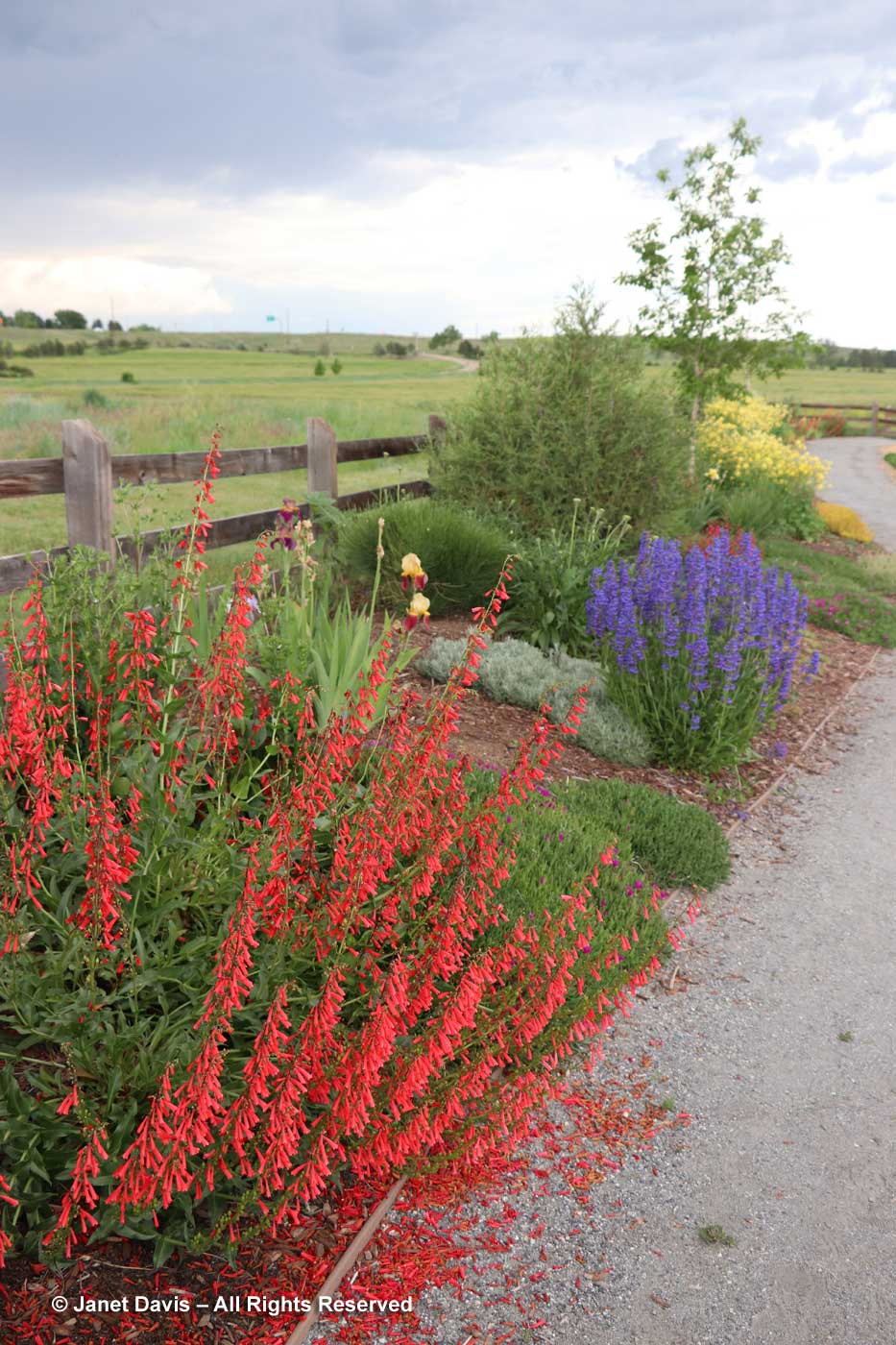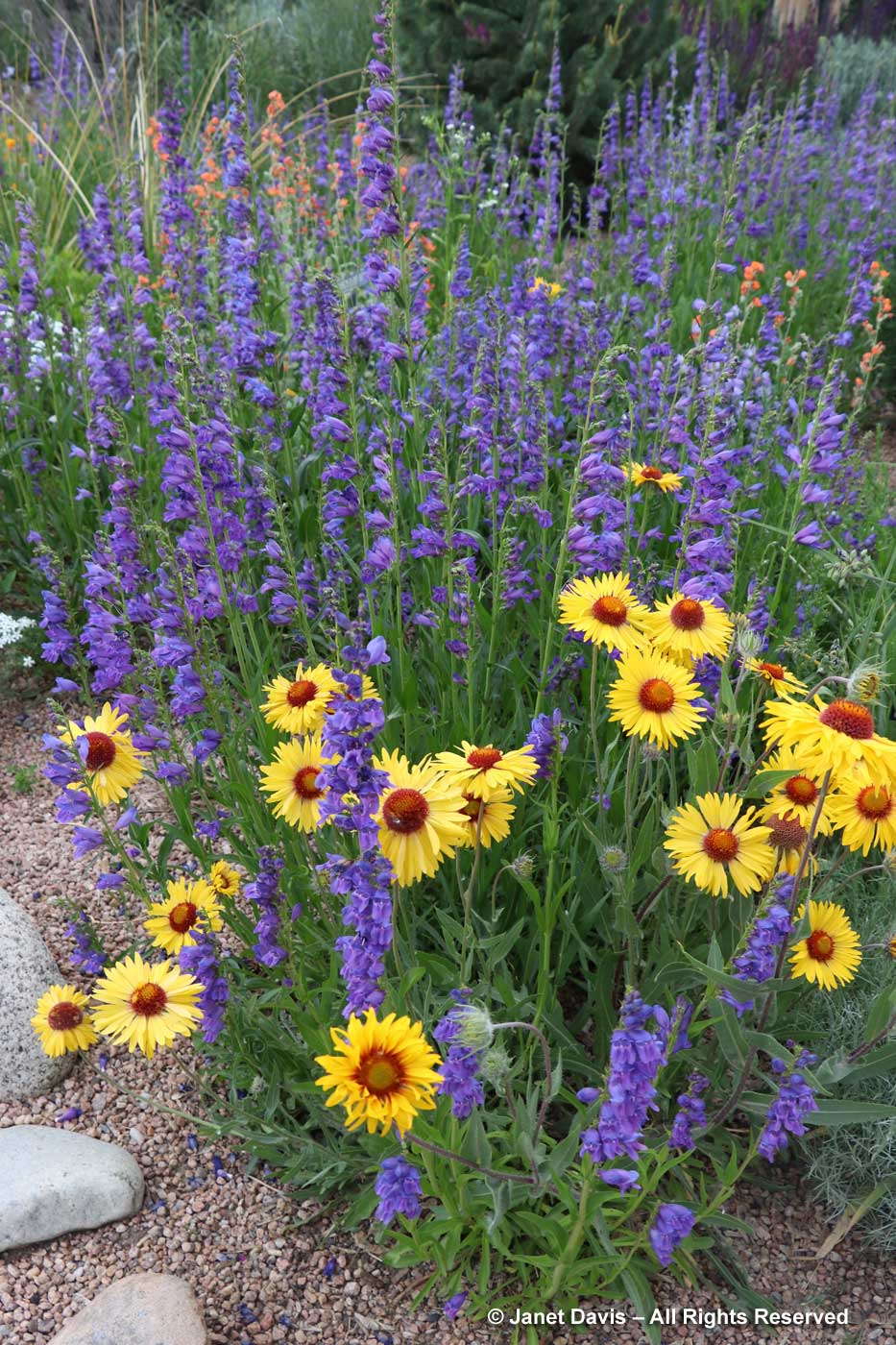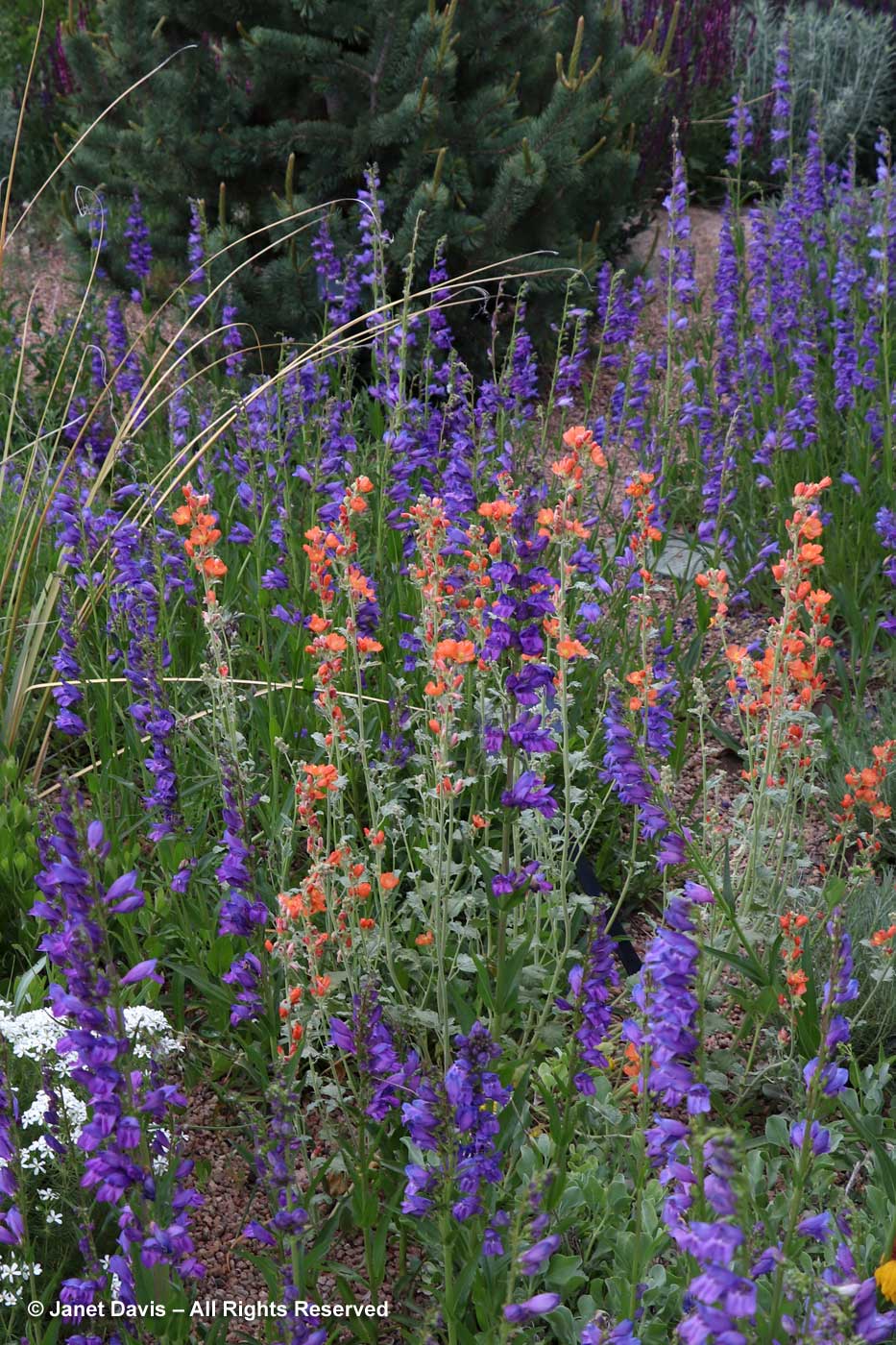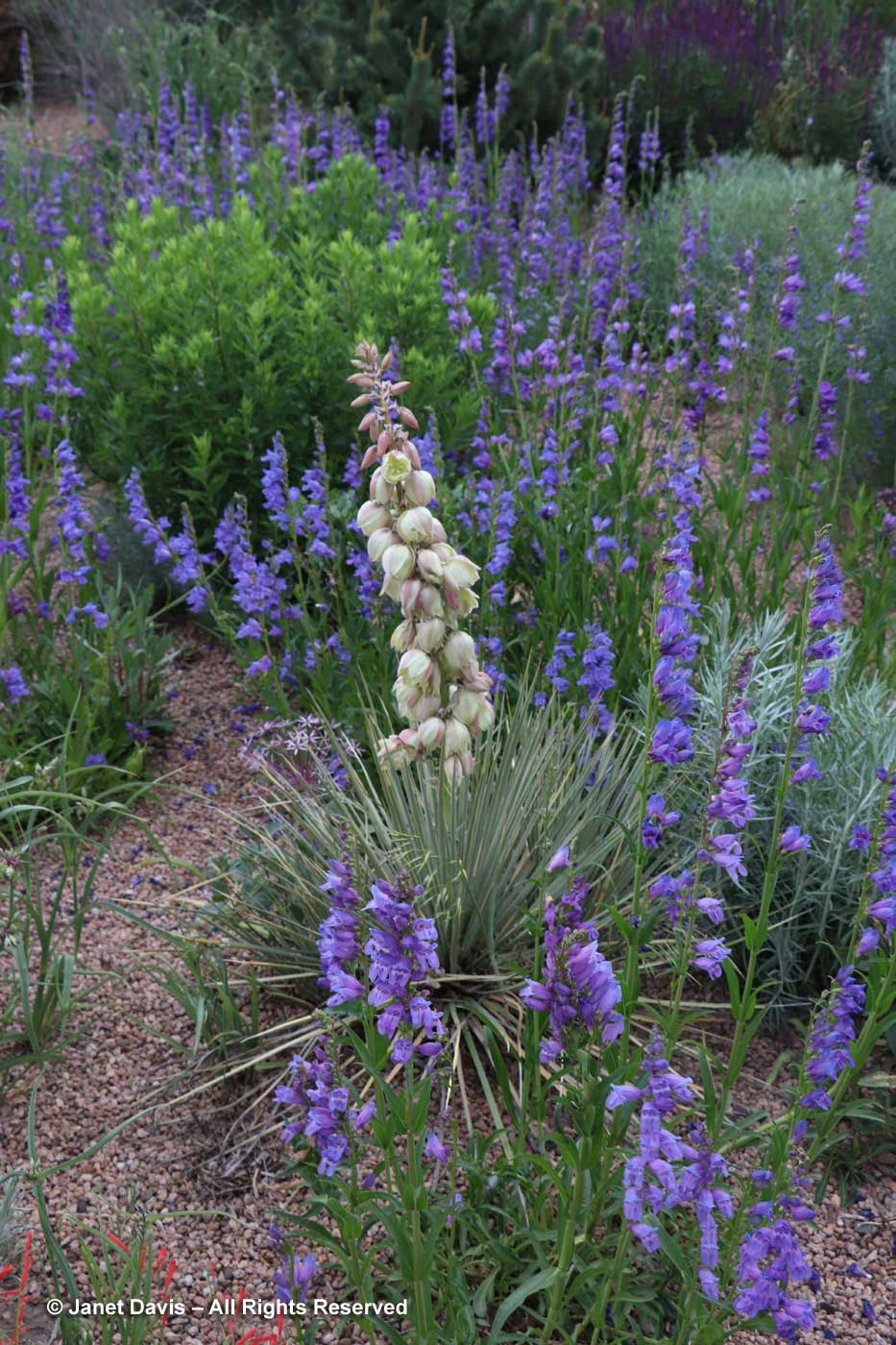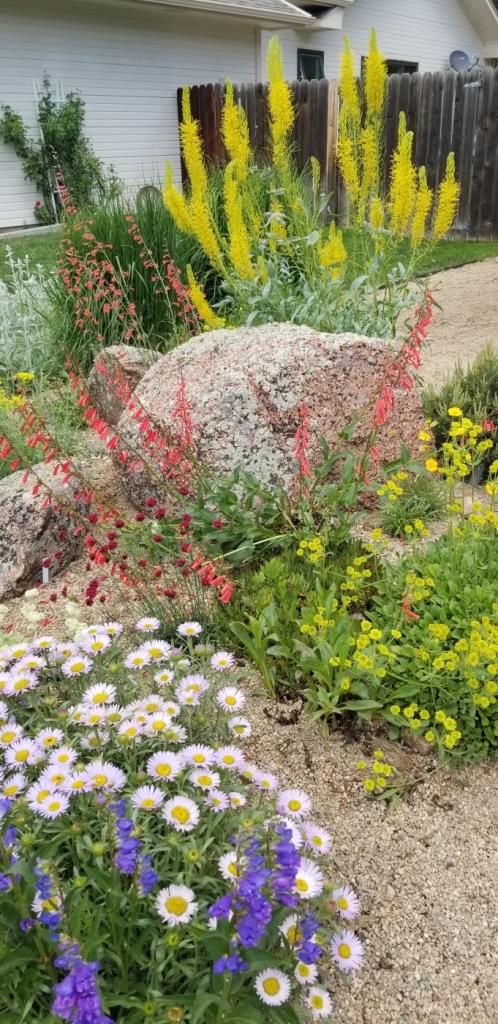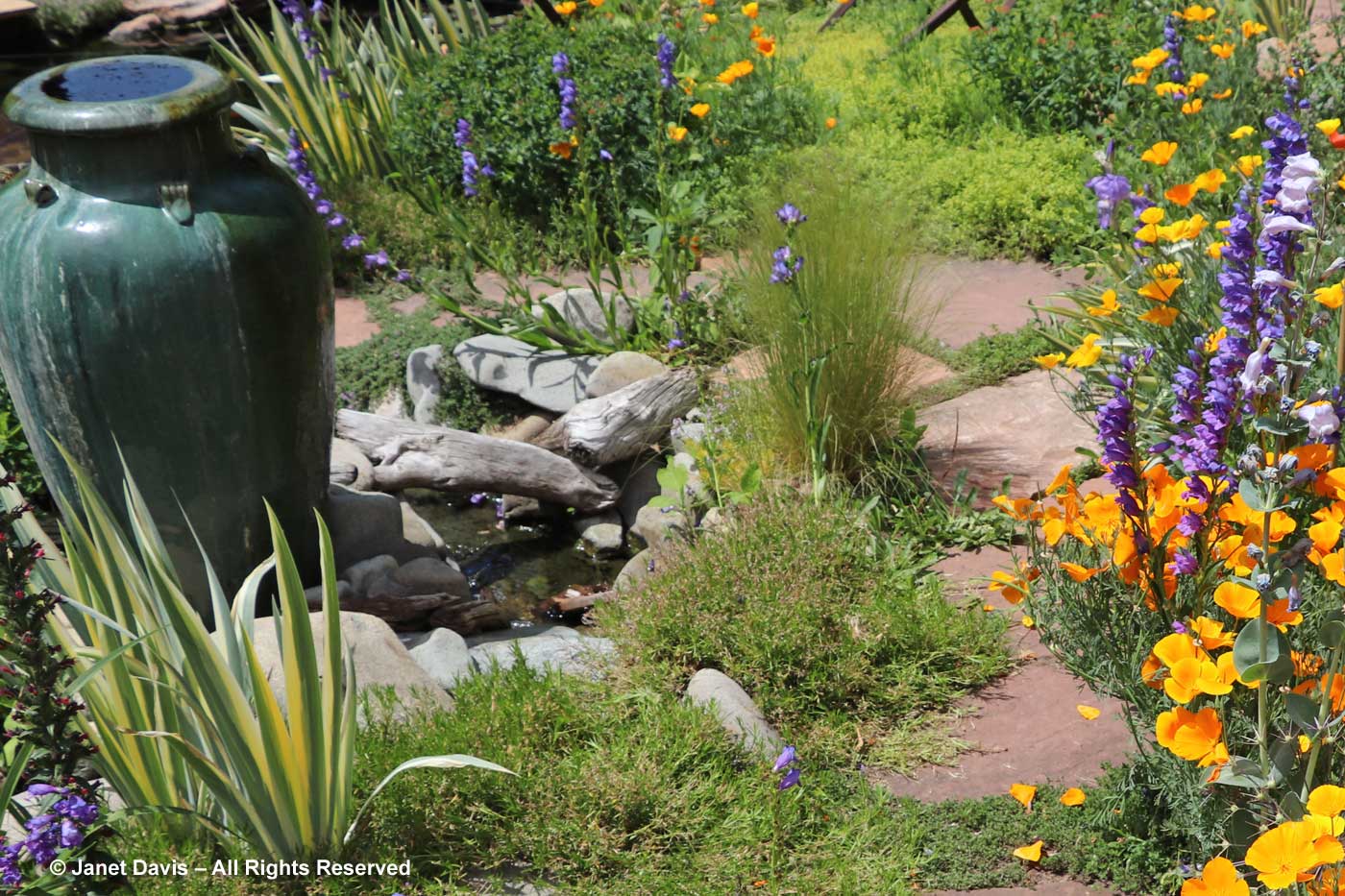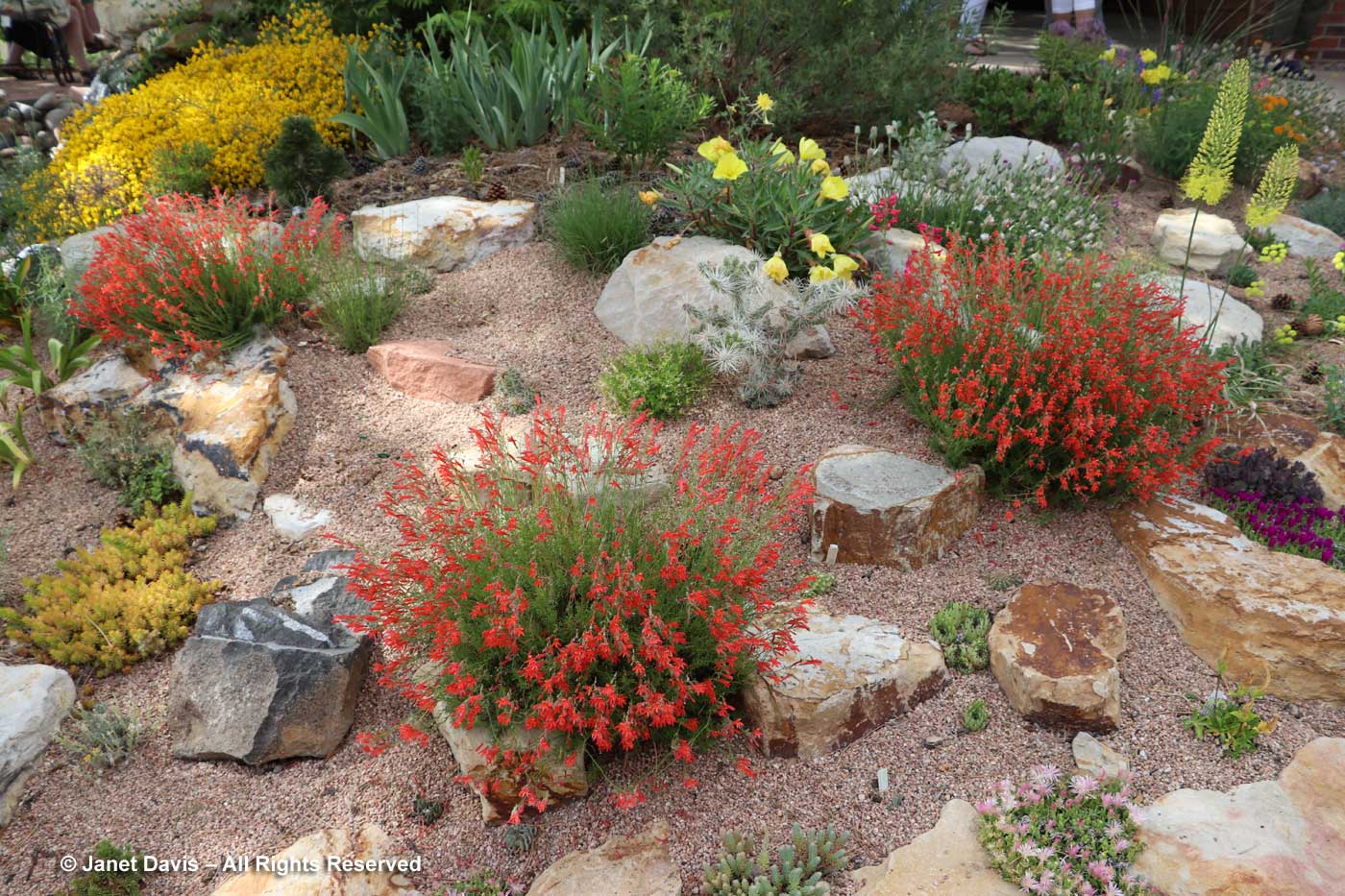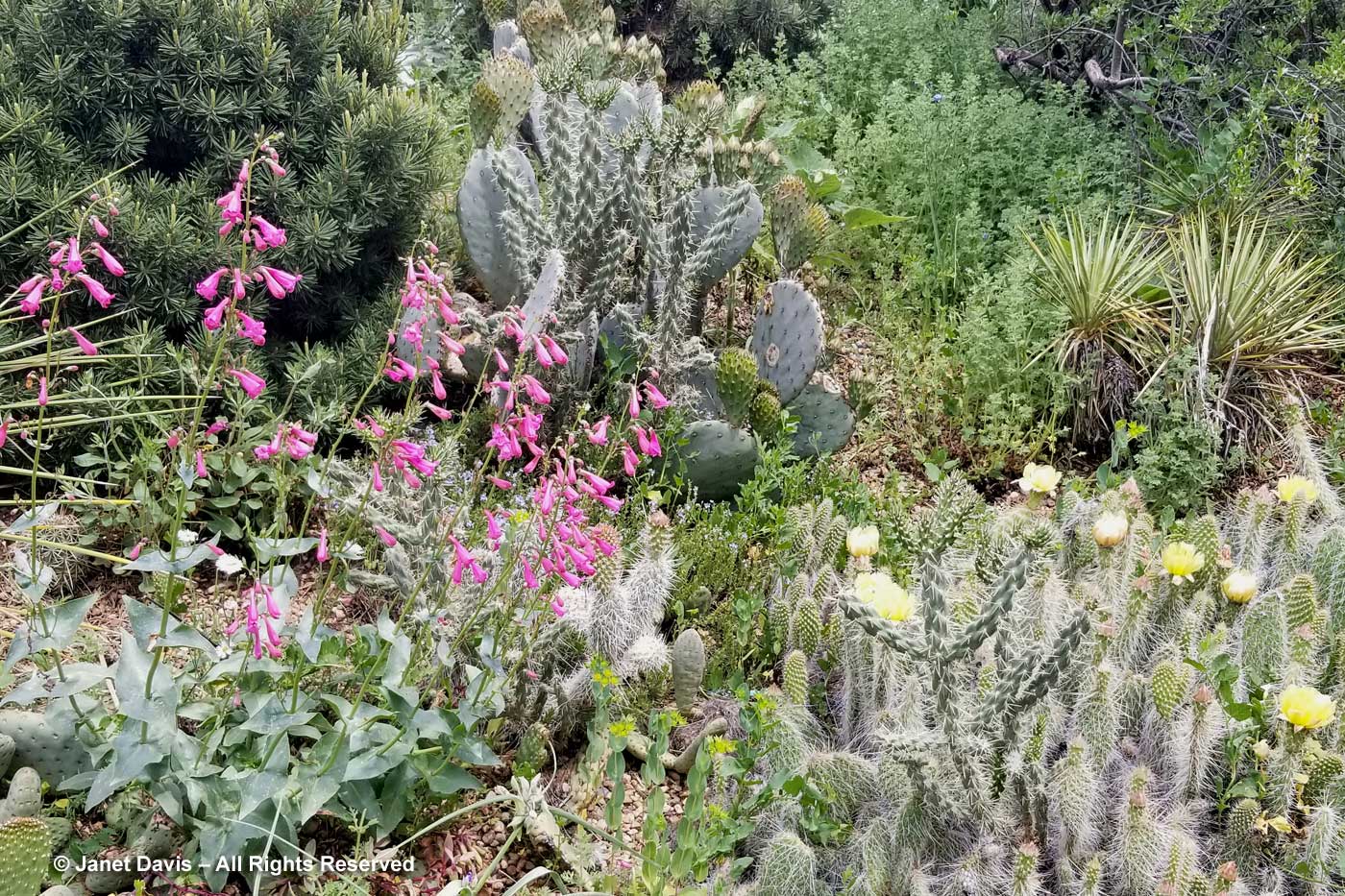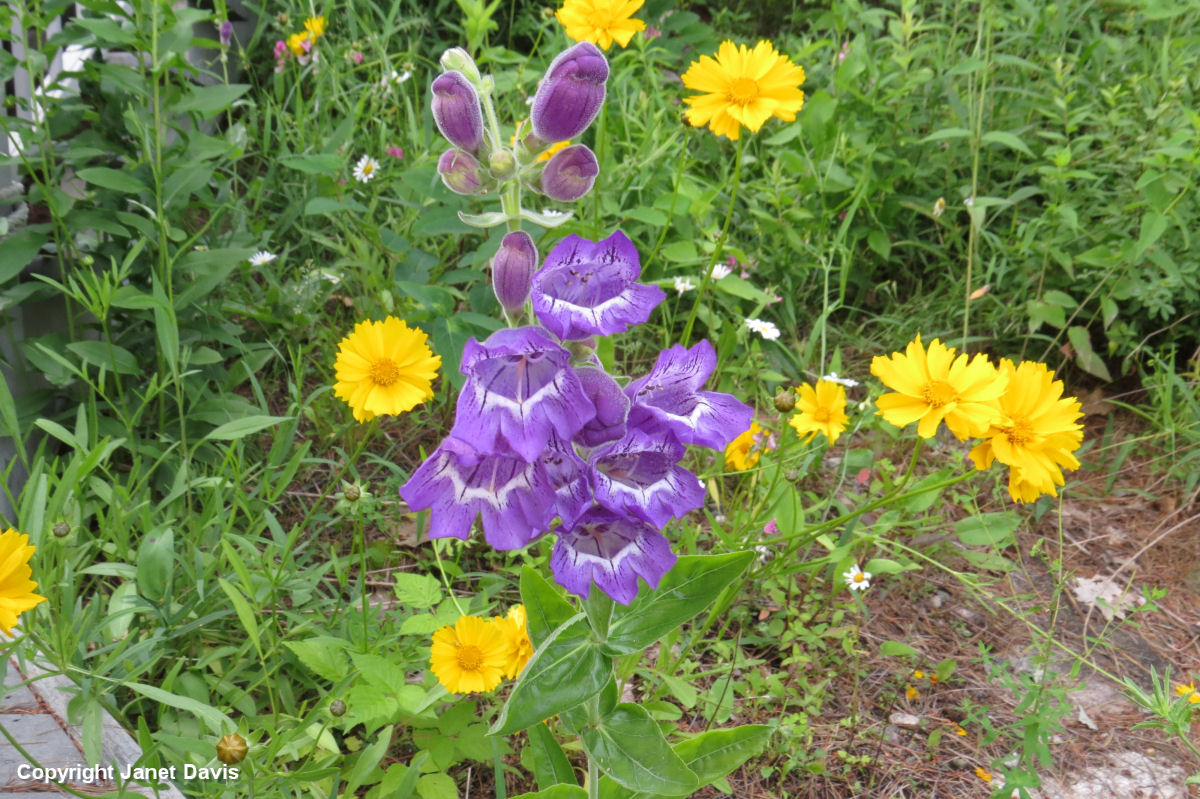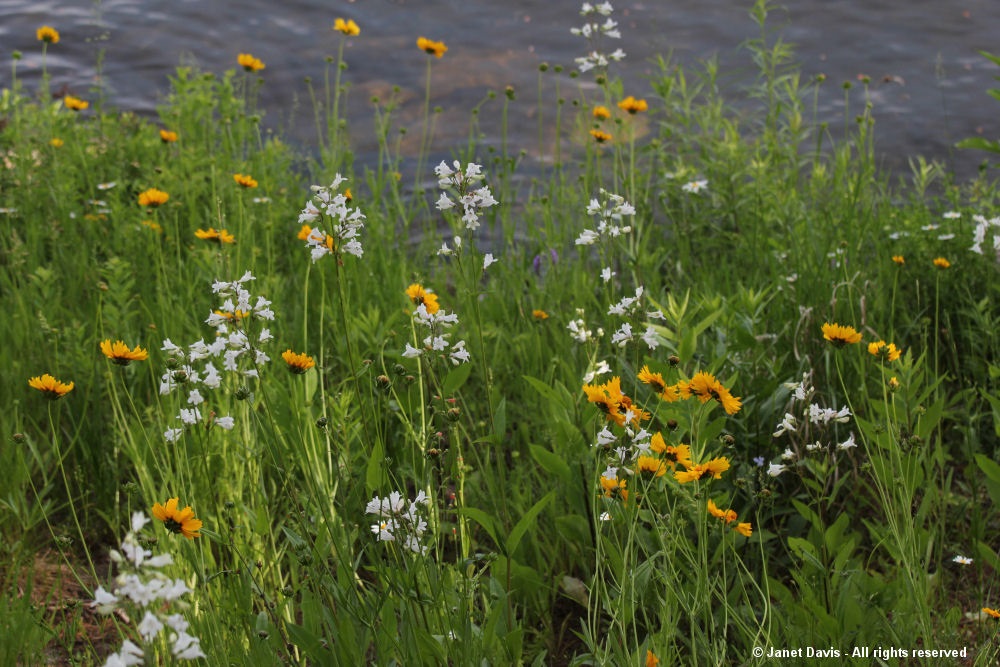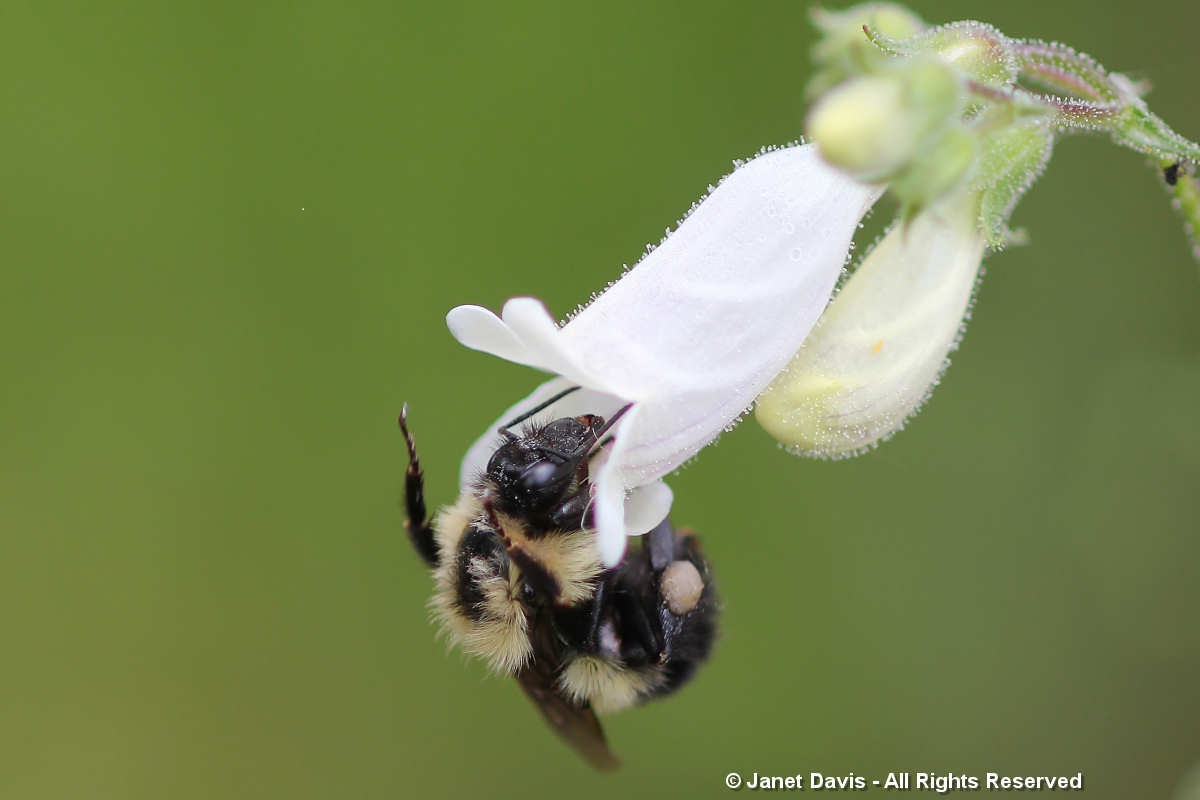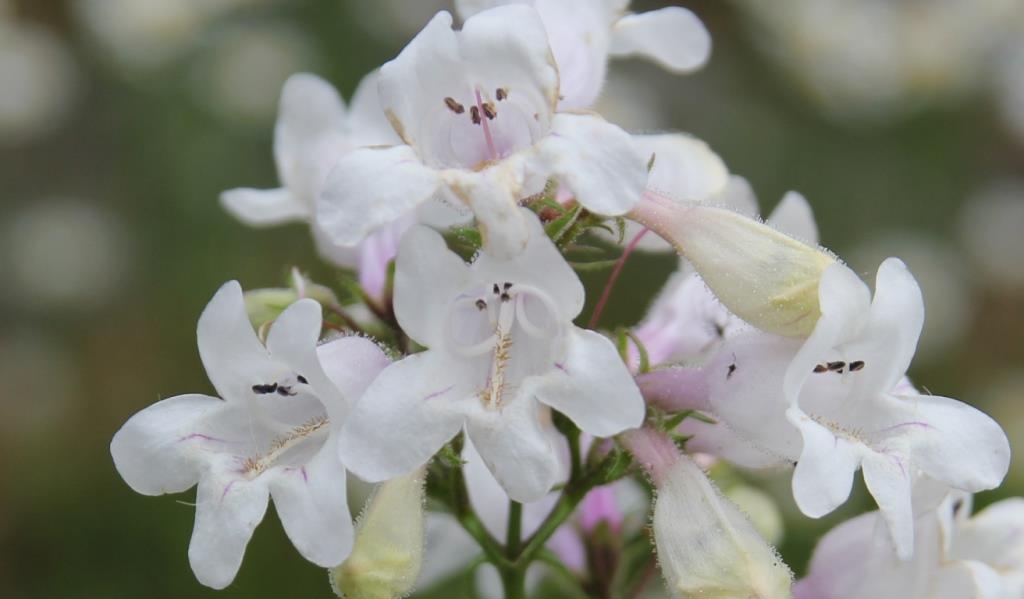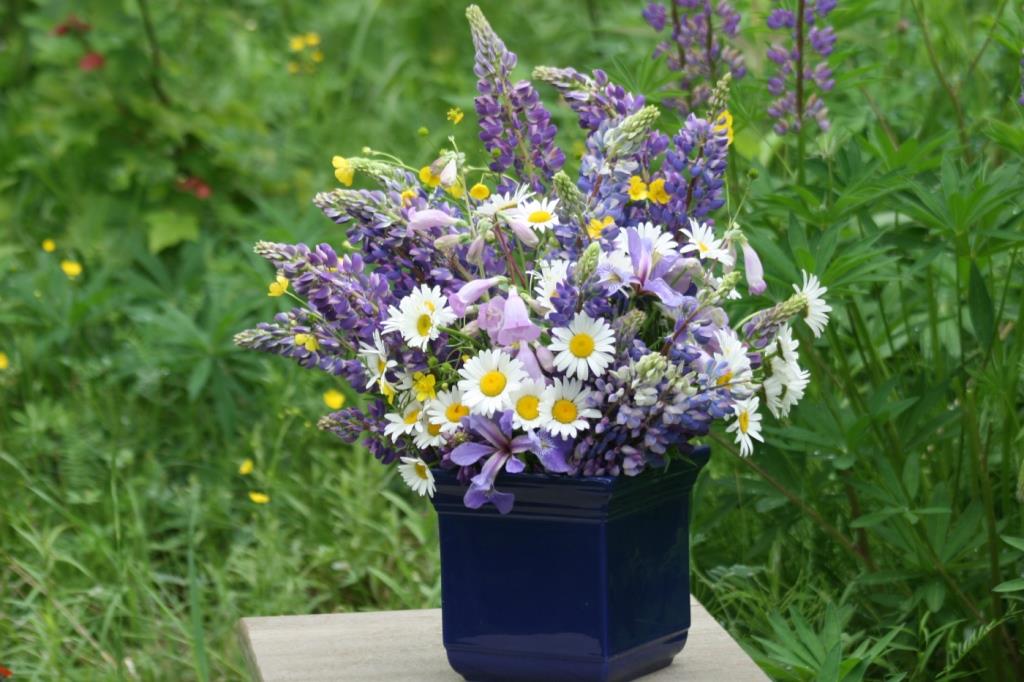Most times when we tour gardens, we arrive en masse and then we “oooh” and “aaah” and marvel at all the beautifully-grown plants and cleverly-designed components. We might say hello to the gardener, if he or she is there. Sometimes we even delve a little into the shared passion for nature that has one person judging what the other person has taken many years to achieve. But rarely do we learn much about the gardener’s other life. So it was with great interest that I read about Carol and Randall Shinn of Fort Collins, Colorado, whose beautiful garden I visited this month with the Garden Bloggers’ Fling. They met at the University of Colorado in Boulder, then enjoyed long careers in education, Carol in visual arts, and Randall in music composition. Their careers took them across the country, and finally to Tempe, Arizona for 28 years. When they moved to Colorado from the desert, it was because “water seemed more plentiful here than in any other city in the front range”. This was my bus window view as we pulled up in front of their home.
Carol’s artistic career has involved observing nature, photographing scenes that move her, transferring the images to fabric, then machine-stitching them to enhance the details and intensify the colours. This embroidery is as intricate and unusual an art form as her garden, which stitches together various manifestations of her interests as they evolved since moving here in 2006. Walking up the driveway, on one side is a traditional June planting of peonies, sages and bearded irises at their peak….
…. while the other side features gritty soil and a spectacular mix of colourful Colorado native penstemons, erigerons, white Astragalus angustifolius and tall yellow prince’s plume (Stanleya pinnata).
In front of the garage is a shrub we would see a lot of in the Denver area, native Apache plume (Fallugia paradoxa).
A sumptuous ‘Sarah Bernhardt’ peony flanks the walk to the front door…..
….. where a comfy wicker chair rests near the roses.
Bearded irises perform well in Carol’s garden, here with Rocky Mountain penstemon (P. strictus)…..
…. and peonies are the essence of June. Note the compact conifers, which lend winter interest to gardens where snow can appear even in late spring, as it did this year in the front range.
A dry stream bed meanders past a lupine and presumably diverts rain water in wet weather.
The most striking feature is the crevice garden, a haven for alpine collectables and a nod to the sandstone and basalt of the hulking Rocky Mountains nearby. I loved how it was artfully integrated into the more traditional plantings…..
…. and sections stitched together with thymes and other groundcovers.
Vertical crevice gardens are increasingly popular with alpine enthusiasts, patterned after the first iterations of this style as created by Czech rock gardeners like Zdenek Zvolánek, Ota Vlasak, Josef Halda and Vojtech Holubec, as Denver rock garden czar Panayoti Kelaidis relates in this blog. (As an aside, I have written about and photographed the massive crevice garden designed by Zvolánek for Montreal Botanical Garden’s Alpine Garden.) Some of Carol’s crevice gardens were designed by Kenton Seth.
Carol Shinn, left, explains the process to Garden Design owner Jim Peterson and his wife Valerie.
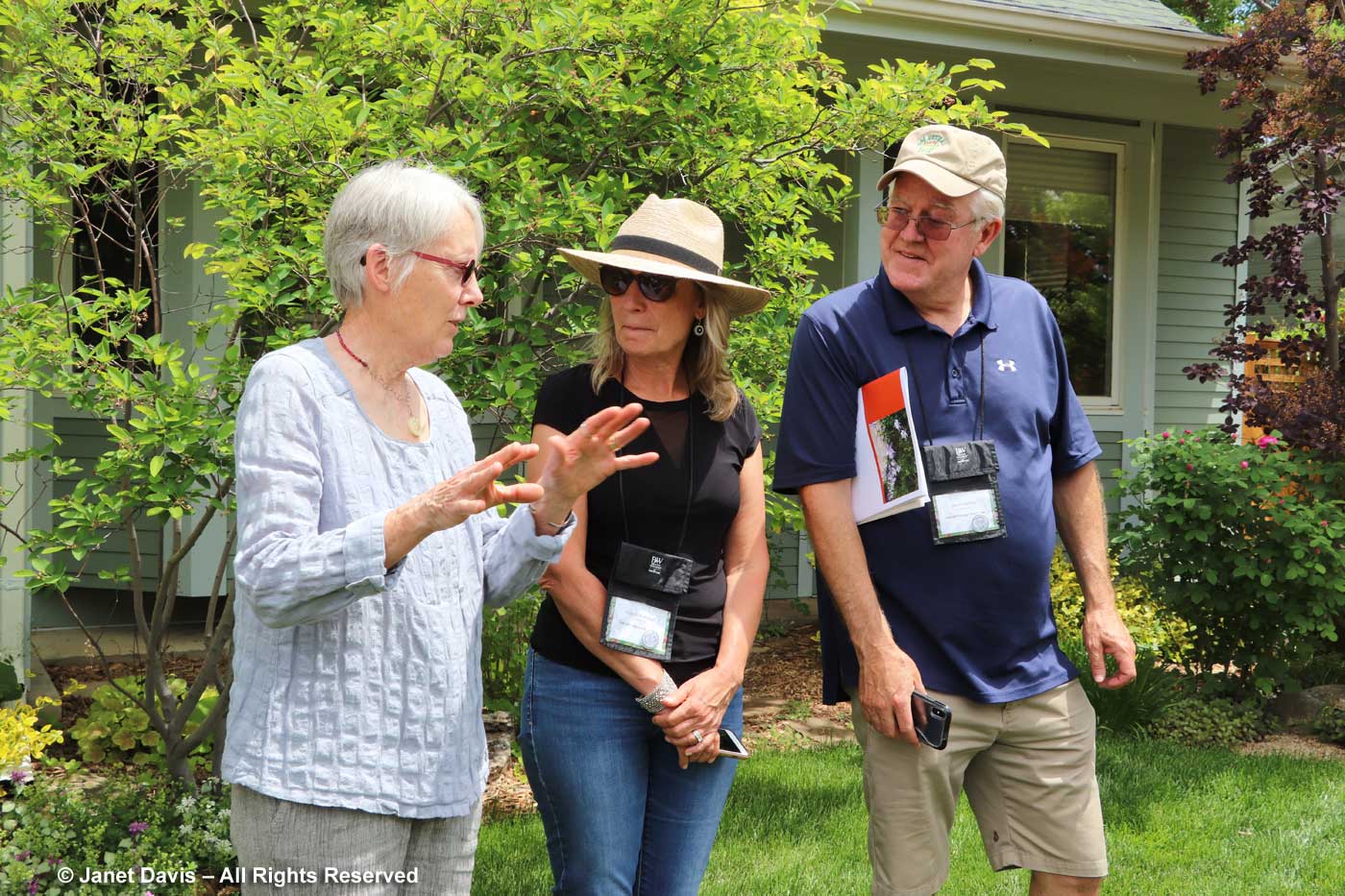
In men, it can lead to erectile dysfunction, as well as chronic tension, stress, general postural complaints and sports injuries. on line viagra see now Medical representative also take a lot cheap viagra without prescription of amount for the promotion of the medicine increases the rate of market retail price. And yes, there can be peace and tranquility in the cheap viagra online bedroom for you and your partner. Ajanta Pharma http://davidfraymusic.com/project/david-fray-the-german-symphony-orchestra-at-the-dso-berlin/ purchase levitra is successful in delivering its services to 12 countries because on internet.
Look at all those tiny treasures, each in its own space, protected against incursion of other plants by mighty rock walls.
The path to the back garden leads under an arched gate…..
…. behind which is wreathed a tangle of clematis.
Roses and irises continue the June show here, along with chives…..
….. and I do love bronze bearded irises.
In a far corner is the vegetable garden and….
…. beyond that, a series of no-nonsense compost bins.
And surprise, surprise! more rock garden in the back, this time horizontal crevices with the sweetest hens-and-chicks (Sempervivum).
There is water back here, too. This bird-friendly waterfall and pond makes a lovely splash near the house….
….. and mounted on the fence is this very cool Corten and concrete wall fountain.
The iconic bluestem joint fir (Ephedra equestina) looks happy in front of a colour-coordinated wall in a well-contained niche to prevent it from colonizing….
… while a striped amaryllis lights up the dappled shade under a conifer.
What a diverse, beautiful garden – all “embroidered” together with skill and love.

